Huamei’s House
When Lisa talks about our apartment, she refers to it as “Huamei’s House.” In our development here in Dali, China, each building is named after a bird, and ours is Huamei. A huamei is a songbird with a beautiful voice and white feathers around its eyes, and Lisa has seen them in the park where seasonal residents from Beijing like to hang bird cages in the morning.
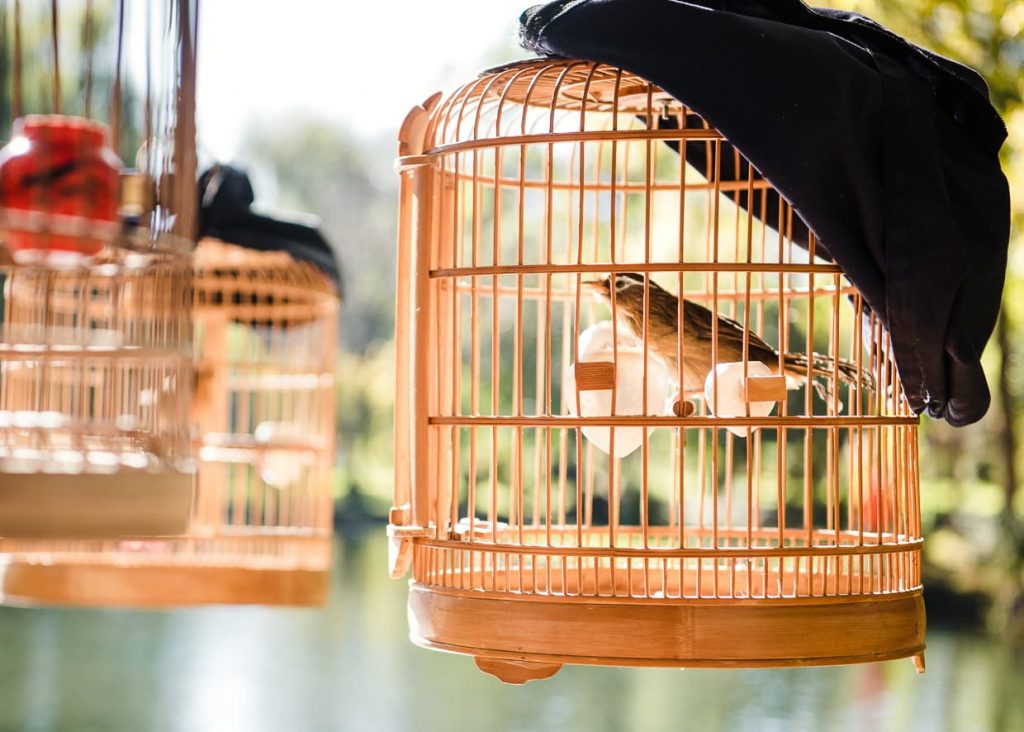
It’s hard to say at this point what her concept of “home” really is. She’s three years old and she’s been traveling for two thirds of her life. She doesn’t remember the United States. She knows her American grandparents through video chats and their visit last April. It’s safe to say, however, that her sense of location, of belonging, of community, and of family are… unorthodox.

This unorthodoxy creeps into the forefront of our lives in the holiday season, when Jake and I try to celebrate with her in a place where the cultures and traditions are vastly different from what we experienced during our own childhoods.
When Jake and I lived in the Northeast, both before and after we met, we were accustomed to a white Christmas. When we moved to Florida after getting married, we had to get used to seeing rope lights on palm trees. We wrote about how Lisa’s first real Christmas celebration last year in Vienna wasn’t exactly what we had envisioned, but even that seemed normal when we think back on it now.
Dali, China is high in Yunnan Province. Our home is at the foot of the Canshan Mountains that tower over us. The mountaintops are capped with snow and ice, but the streets around us are lined with palm trees, and cherry blossoms. Right next door, red Chinese lanterns hang on the gates of the old town, and beyond that are fields of rice and vegetables that grow near the shores of Erhai Lake, historically referred to by the landlocked locals as “The Ocean.”

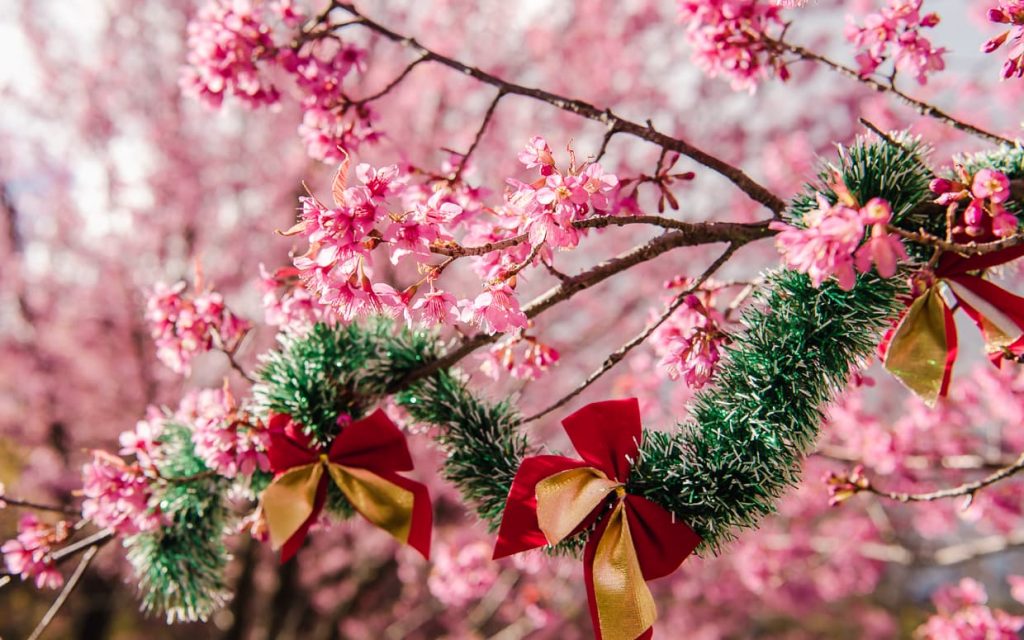
A few people in Dali noticed that it was Christmastime. At the mall in the city on the southern side of the Lake, one or two of the more international storefronts had decorations in their windows. At the weekly fair at the popular Four Season Market, Christmas carols were playing on the loudspeakers, and one vendor was selling spiced wine. It was so strong that we both felt drunk after a serving the size of a Dixie cup.


Mostly however, Dali, China remained Dali, China. There was almost nothing about it that reminded us of the holiday season in the United States. They say there’s no place like home for the holidays, and Jake and I had never celebrated in a place that looked, sounded, tasted or smelled less like home.

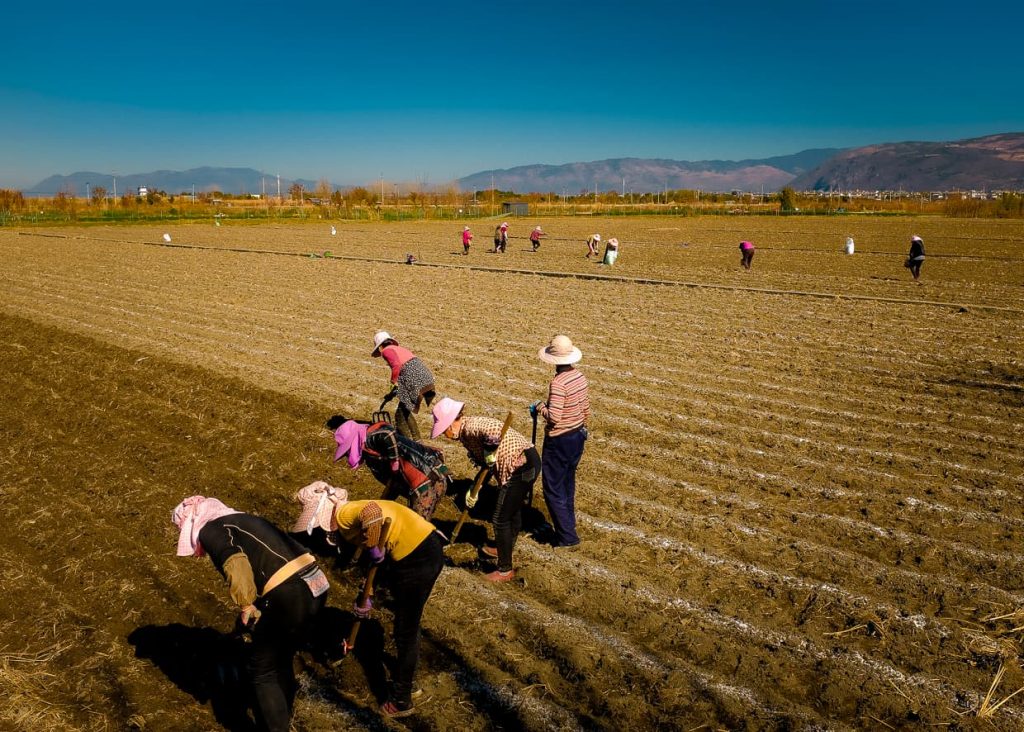
But for a little girl who lives in Huamei’s house, “home” is just the the place where Mommy and Daddy tuck her in at night. She doesn’t know any traditions or have any ideas about what’s important about Christmas, and that meant that we had a chance to help her build something new. Someday, Lisa will have memories and traditions that come to mind when she thinks about Christmas, and we wanted to make sure they revolved around family, celebrated kindness, and transcended borders.
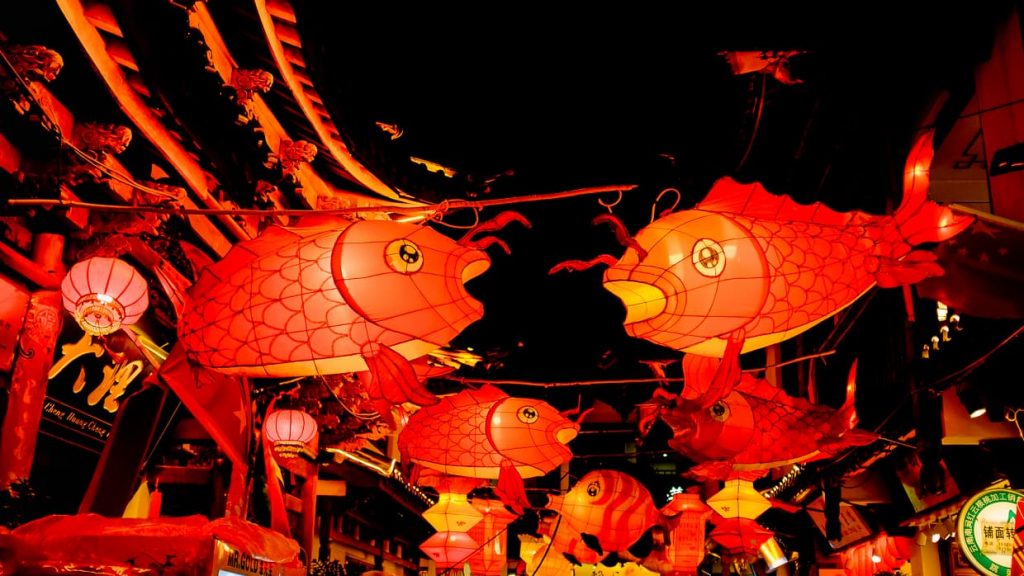
Decking the Halls
No matter what, we knew we were going to decorate our house. Last year in Vienna we’d set up a small tree, but by Christmas Day, Lisa had lost most of the ornaments under the couch of our Airbnb. But that was two-year-old Lisa. Three-year-old Lisa knew what a Christmas tree was and she’d seen how her favorite cartoon characters decorated them.
She also knew that a Christmas tree is where presents go.
In early December we hailed a Didi and took a ride to Xiaguan, the downtown district of Dali about thirty minutes south from the Old Town. It’s not a big city, especially by Chinese standards, but it was our best shot at buying some Christmas decorations in Dali. In the basement of Dali’s biggest mall, there is a Walmart, and even though it’s not our favorite place to shop, we knew we could find what we were looking for by lunchtime.
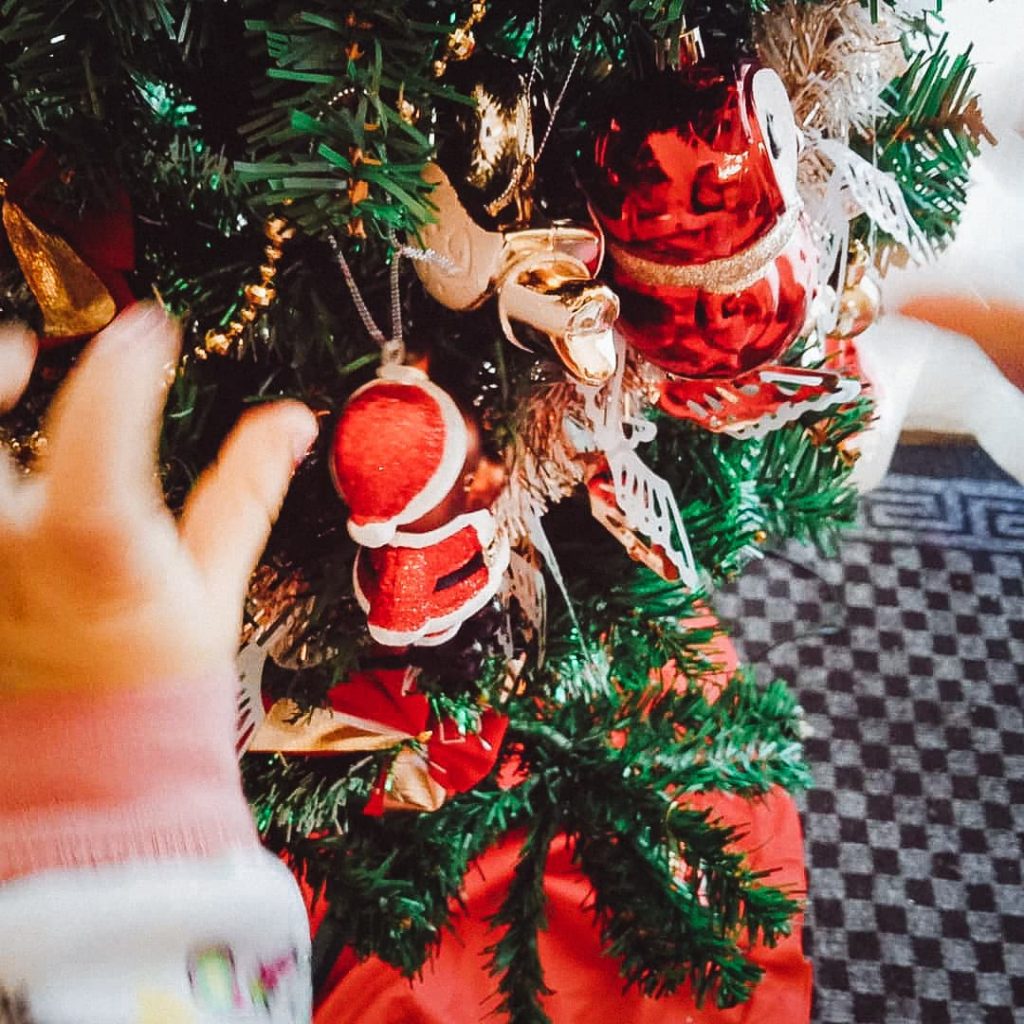
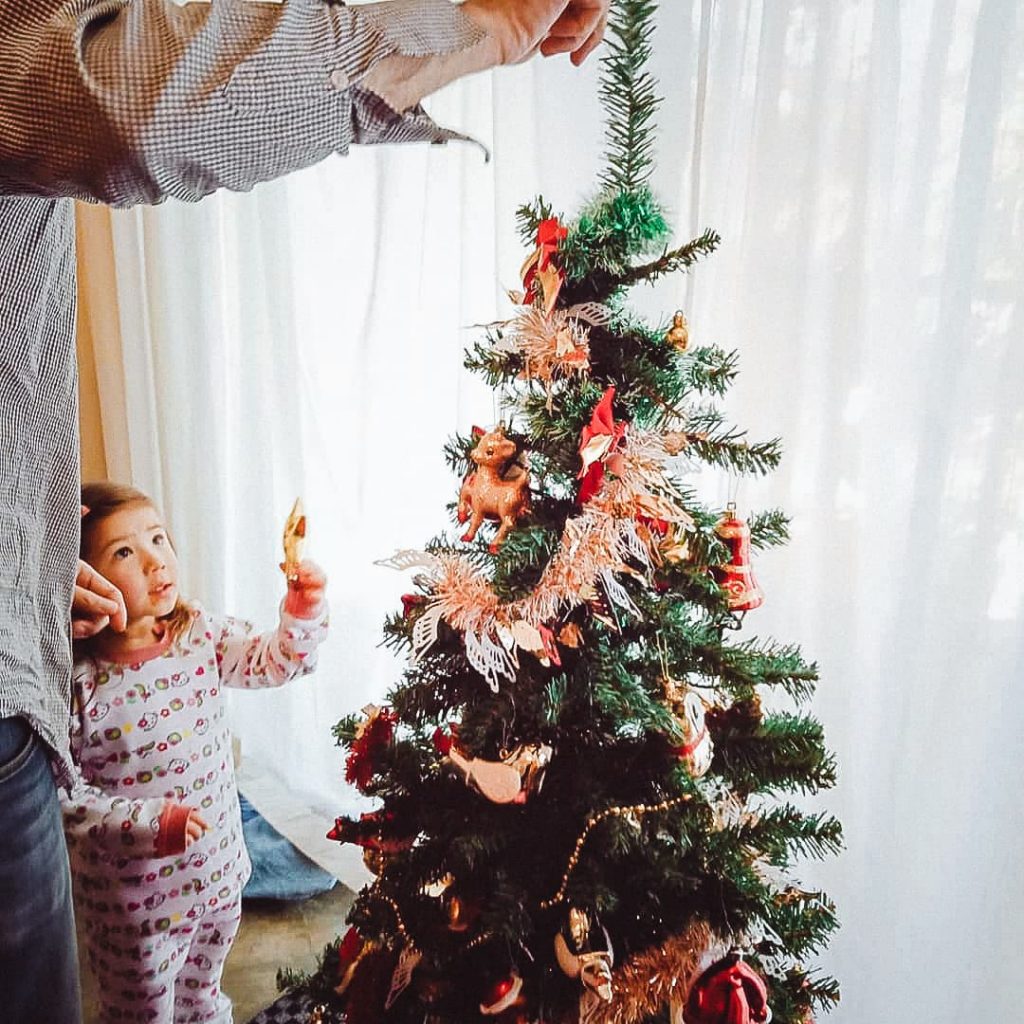
The star goes here.
The Christmas display was surprisingly small, and it was the only part of the store that had seasonal music playing. Luckily it did have plastic trees, tinsel ropes and colorful baubles to hang. Lisa ran from shelf to shelf pointing out her favorite things. Some of them were tasteful and some of them were a bit silly. We were able to talk her out of the purple tree, but she twisted our arms and sold us on the candy canes.
We got everything we thought we needed. A four foot tree, some lights, a bucket of ornaments and a few other things we could use later for some photos. Lisa was practically shaking with excitement on the way home, and we didn’t even try to put her down for a nap before there tree was set up.
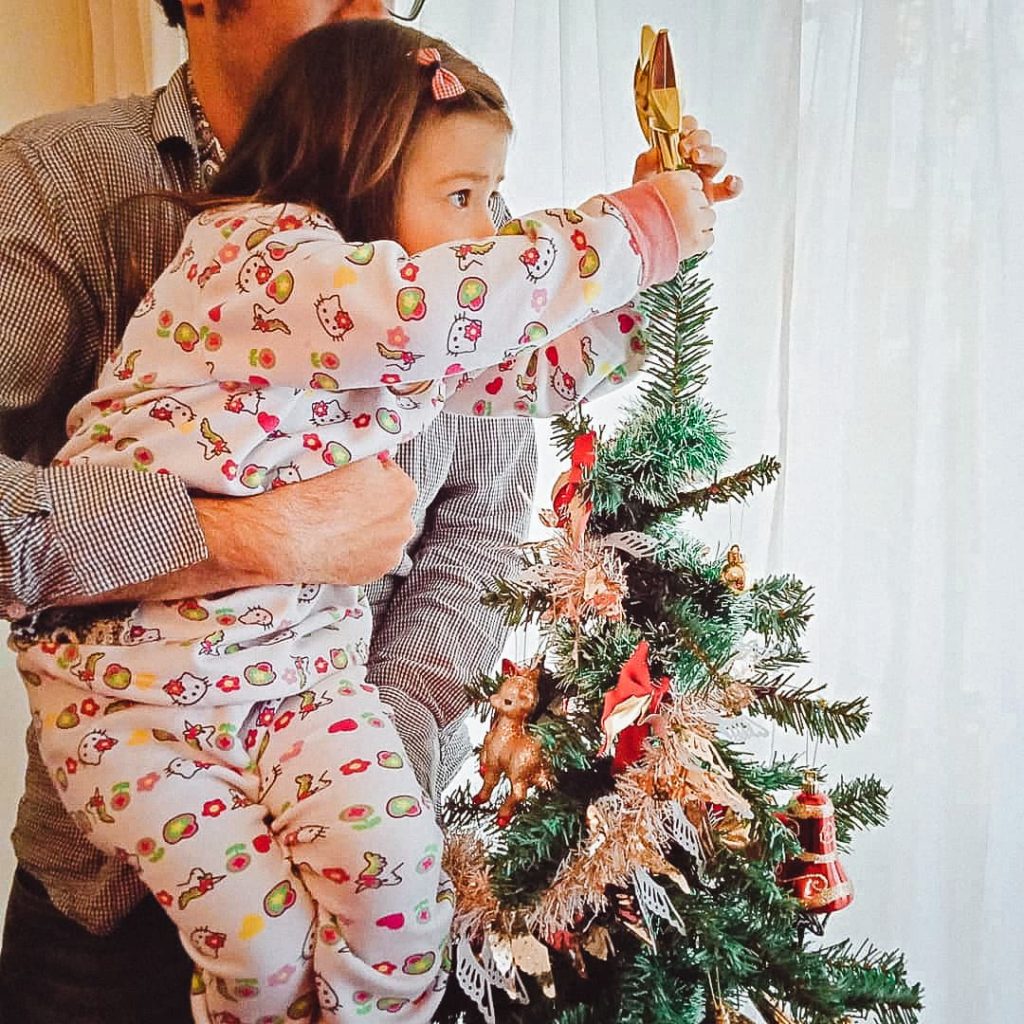
Jake holds Lisa up so she can put the star on the tree. 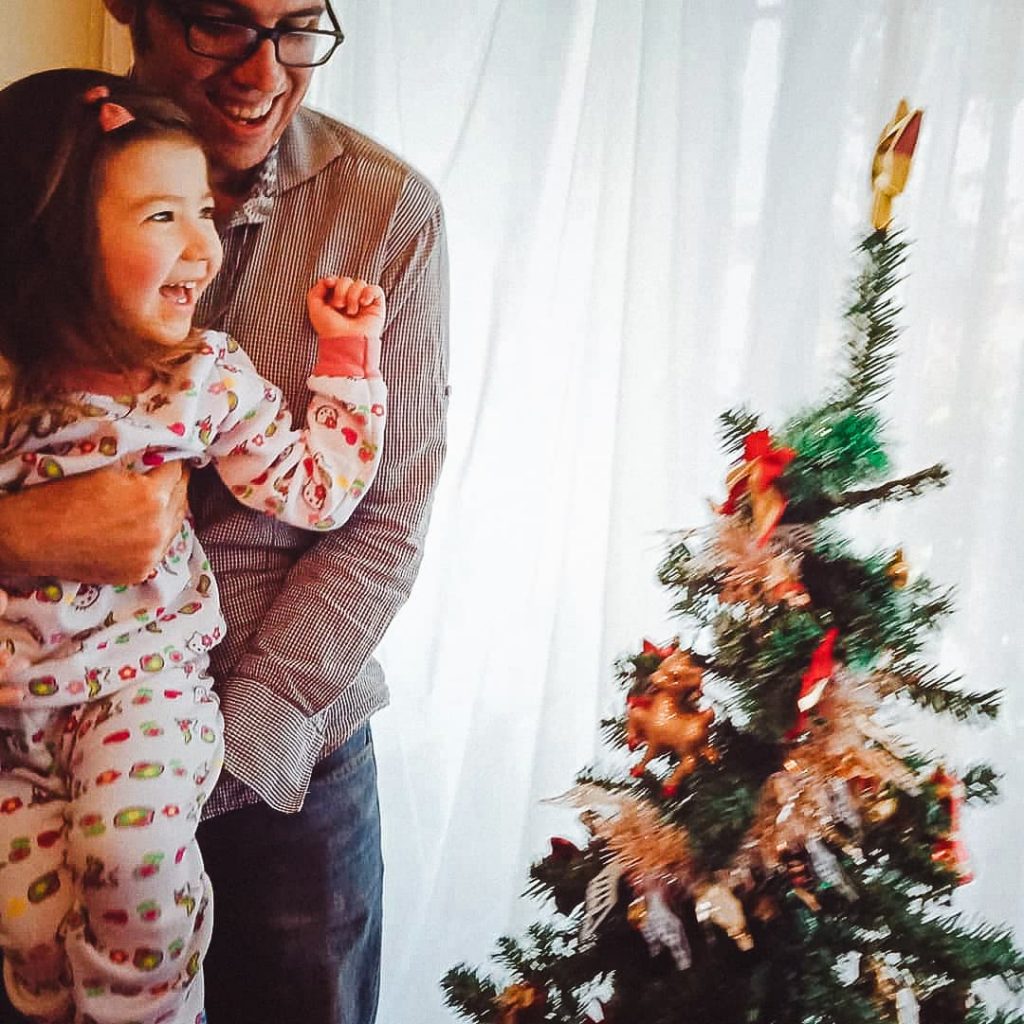
Well done.
I taught Lisa how to hang ornaments on the branches while Jake wrapped the lights around the trunk. Lisa ran back and forth between the packaging and the tree, declaring which ornaments should live together and why (“the owl lives next to the bell because the bell is red and the owl is red”). Of course she put everything on the same side of the tree, but we rearranged them when she wasn’t looking. When everything else was done, Jake held Lisa up so she could put the star on top.
That night, our window was the only one in our neighborhood with colorful lights blinking through the darkness.
But we knew that one day we were going to be moving on from Dali and that all of these cheap decorations wouldn’t be coming with us. We wanted something that that we could bring, something small but special that would tie each Christmas to the last and remind us of where we have been and what made each holiday season memorable.
As it happened, we already had two small things from a Christmas Past. Last year, we had spent December in Vienna, and at a Christmas market there we’d bought two small wooden ornaments; a flat red tree and a small green bell. Jake told me how when he was young (and even through his teenage years), one of his favorite Christmas memories was digging out the crate in their basement filled with tree ornaments they had accumulated over the years. Some were store bought, some were gifts, and some were handmade.
We decided to start a collection of our own, though since we planned on traveling more in the future, hopefully one that would not require a “crate.” We wanted each piece to be emblematic of the time and place where we acquired it, and what our lives were like at the time. That afternoon we set out for the Dali Old Town to see what we could find.
There is no shortage of souvenir stands in the Old Town, many of which sell colorful objects that could, theoretically, be hung on trees. Most of it is garbage, though - little mass produced knickknacks that shop owners buy in bulk online and sell to tourists at exorbitant prices. Most of it can be purchased almost anywhere in China (or even overseas). Luckily, we’d been living here in Dali for almost a year and we knew exactly where to go.
It was a Saturday, and on Saturdays dozens of vendors gather on Bo’ai Road and set up a temporary antique market. Travelers and locals shop there for old coins, marble art, tapestries, religious objects, decaying books, jewelry, polished stones, and just about anything that a merchant thought looked old, unique, beautiful or valuable. A lot of it is fake, but shoppers who are savvy or willing to take a risk have a reasonable shot of walking a way with something they’ll treasure.
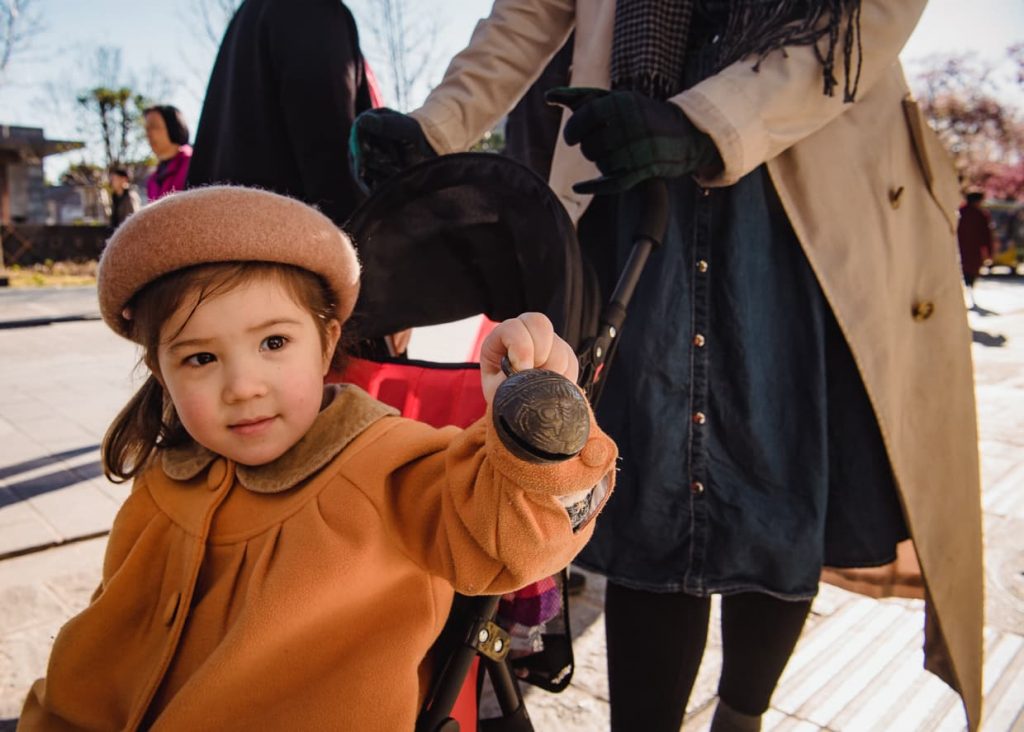
And so it was there we found ourselves searching for Christmas decorations in a sea of strange objects spread out on rugs and tabletops, covering the crowded sidewalk between a Buddhist Temple and a mosque. Whatever we picked out, we knew it would perfectly represent our year in Dali.
We spent a long time considering a metal bell that Lisa liked ringing. Some stone figurines were beautiful, but much too heavy. Old coins with holes in the centers would be easy to hang, but they all looked to similar. Making a decision was as tough as we thought it would be. But when we finally found what we were looking for, it was as obvious as could be.
One woman had a very strange assortment of things that she said she had picked up in her travels. Much of it would never do, but there were two things, side by side in the middle of her table that just looked like Christmas ornaments. They weren’t though, at least not yet. I asked her what they were and she said she didn’t know what they were for, but she’d bought them at a market it Tibet.

One was a small wooden ball that was intricately carved and painted. What looked at first like drawings on its surface was actually small pieces of gold colored metal that were pressed into ridges in the wood. It was encrusted with blue pieces of stone or glass.
The other piece was a seashell, the outside of which had been coated in some kind of pewter like substance and decorated with more gold colored wire and blue and red material (stone? ceramic?).
Of course, we had no way of knowing where the things actually came from, but we knew that we hadn’t seen anything like them before. Plus, they looked the part. We talked the price down to about half of what she was originally asking for them (still too much), and when I got home, I looked up Tibetan charms to see if I could find our new ornaments. Sure enough, they were in fact Tibetan, and the symbols represented prosperity.
We put a string on them and called it a day.
The Night Before Christmas
On Christmas Eve, Lisa was excited. There were presents under the tree, and she had told a stranger in a Santa suit that she wanted “the doctor thing” for Christmas. Luckily, one of those boxes contained a doctor dress up set, which we were pretty sure was what she was talking about.

But what really had Lisa excited was leaving out mince pie for Santa. Sure, she had no idea what mince pie was - or that our vegetarian family had none lying around the house - but that was what the character in her Christmas book had left out and she couldn’t wait to do the same. When the sun went down, we turned off the lights in our house and lit up the tree.

I made Lisa a small cup of hot chocolate with mini marshmallows while we read her Lulu’s Christmas one last time before bed. Before she brushed her teeth, we put out a few chocolate chip cookies on a plate with a little jar of milk and two pieces of red carrots fresh from the Dali oldtown market for the reindeer. I let Lisa carry it, carefully and slowly from the kitchen to the tree and leave it out on a table for Santa. She was so excited and kept posing for photos.
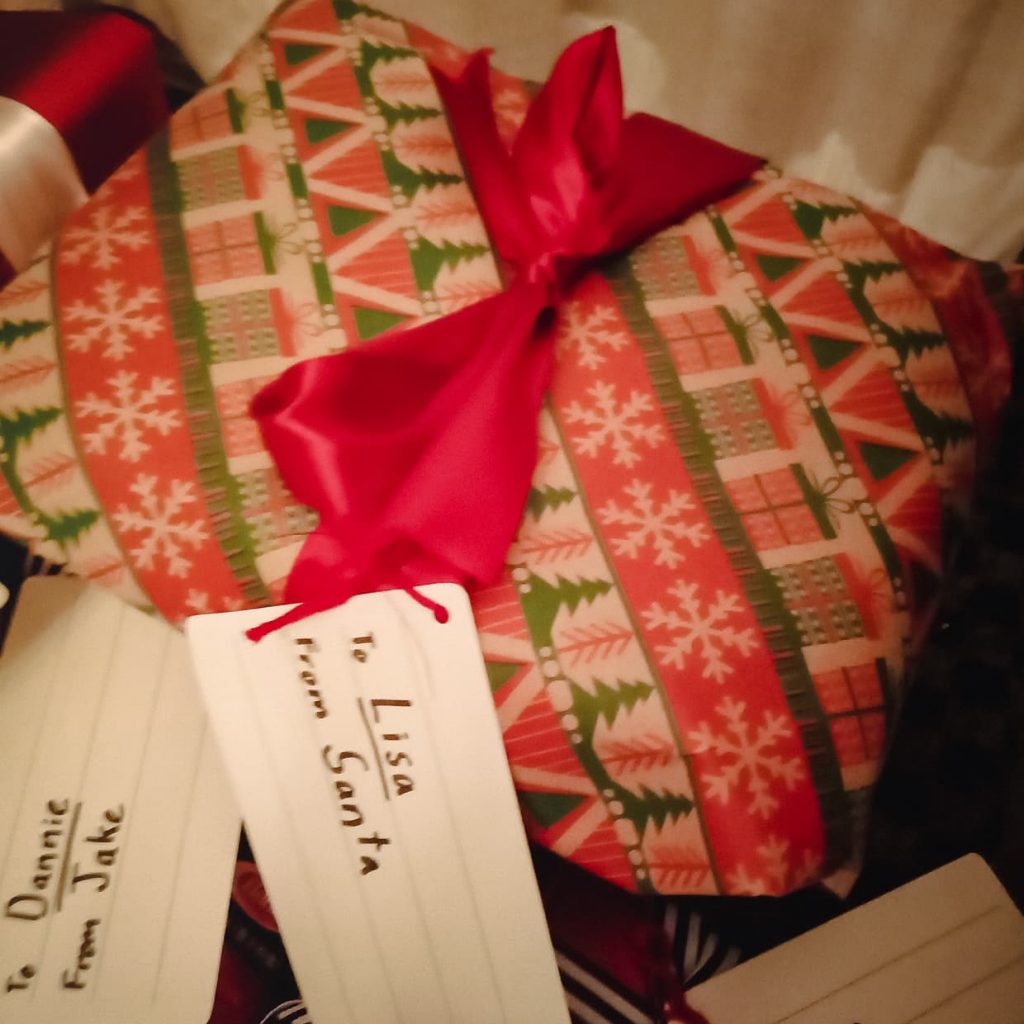
For Lisa 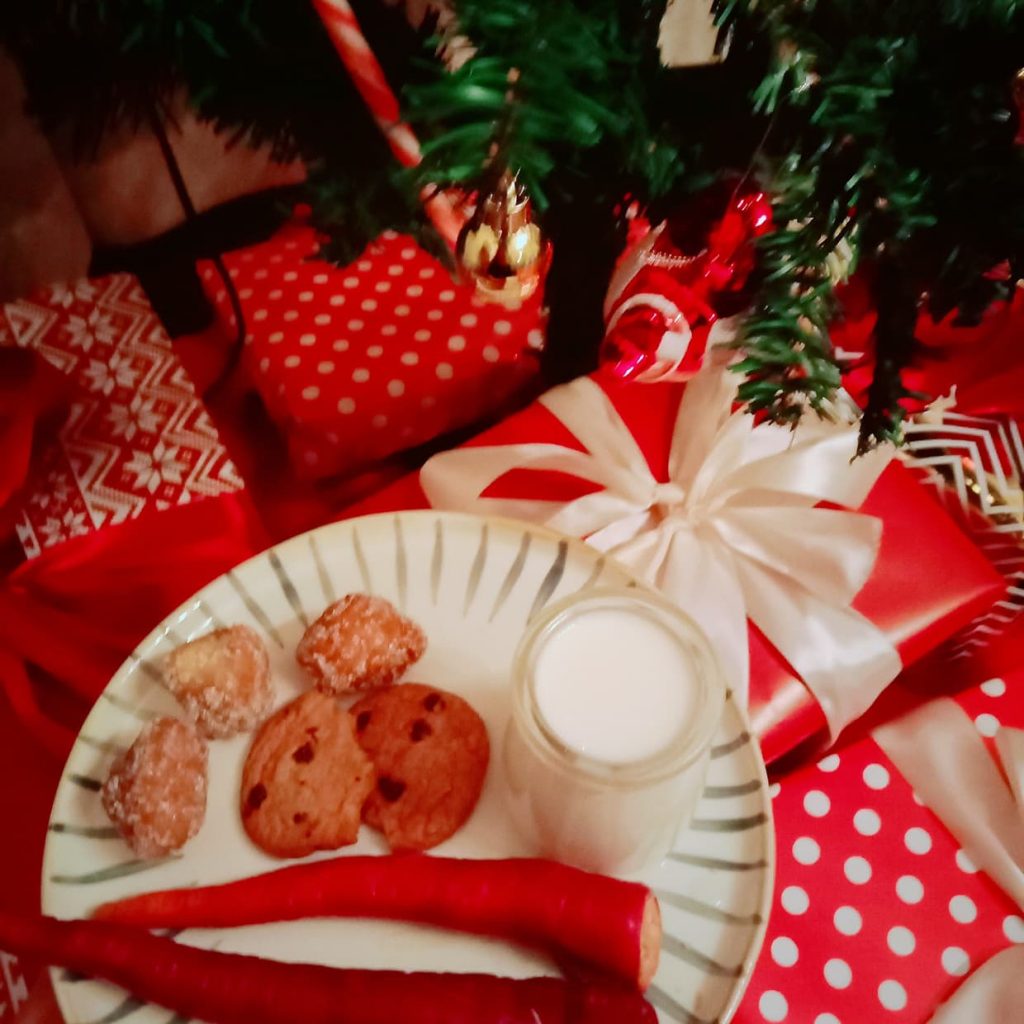
For Santa and the reindeer.
After Lisa gone to bed, my mother agreed to look after he for us, Jake and I went out for a little Christmas Eve walk in the Dali old-town. We walked around on busy streets full of young out of towner celebration Christmas in the most Asian way, we ate our favorite street food, and talked about the year.
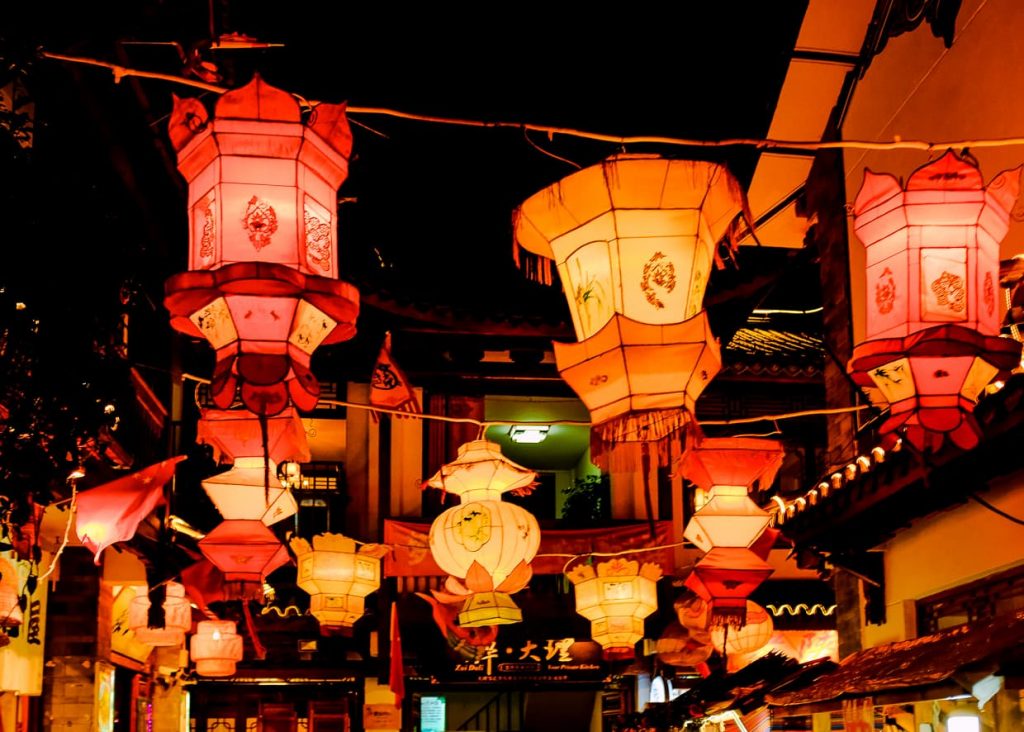
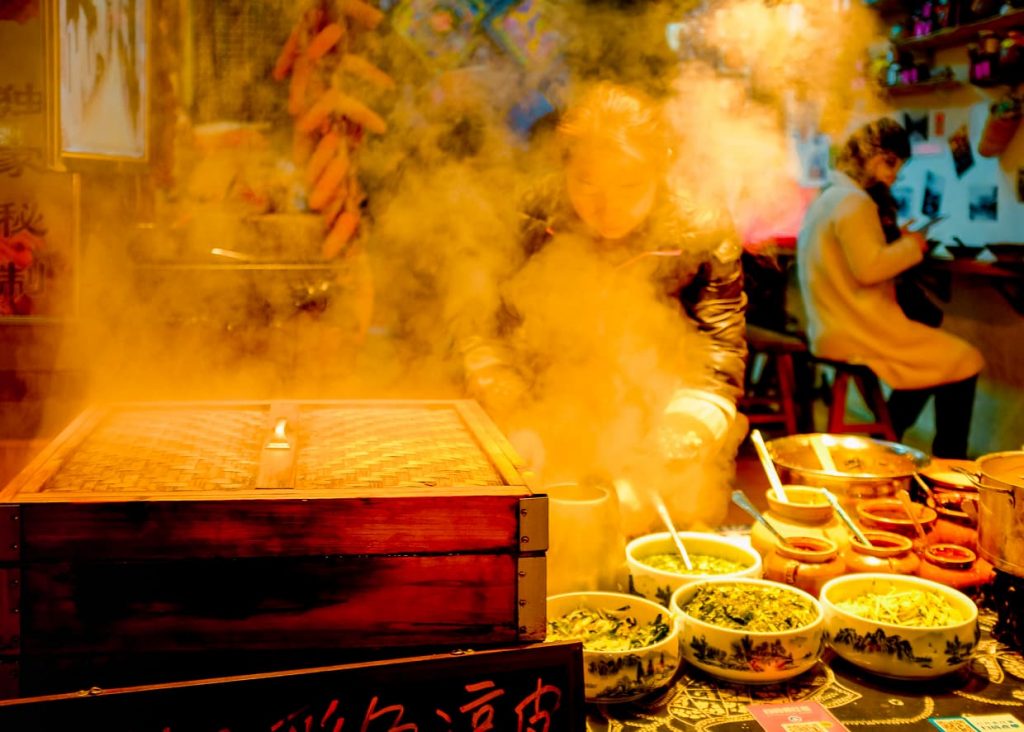
When we got home, we wrapped up a few extra presents we had hidden away, and labeled them “from Santa.” Jake and I ate the cookies and the carrots, carefully leaving a few crumbs as evidence.

Gathering Together
On TV, kids always wake their parents up on Christmas morning. It turns out Lisa’s as much of a sleepy head on holidays as she is on school days. Jake went into her room and woke her up, just in time for breakfast. While we were eating, the Christmas tree, surrounded by an even bigger pile of presents, was clearly visible, and Lisa had a hard time concentrating.
When 8:30 rolled around, Jake got his parents on video chat so they could watch Lisa open presents (including a couple from them). Lisa was happy to see Grandma and Grandpa, and they were happy to see her. For them it wasn’t Christmas morning yet, it was still 7:30pm on Christmas Eve. Still, how amazing is it to live in an age where we can all be together even from so far apart?


The doctor is in.
We all opened our presents, and Lisa cheerfully did the legwork, delivering gifts to their recipients around the room (with a little help reading the labels). Santa came through with her doctor set. Jake and I each got some comfortable winter clothing that was badly needed. My mother got a mug. There were more gifts, but the best part was the look on Lisa’s face and having the whole family together.
When it was all done, Lisa ran off to her room to play doctor with her dolls, we said goodbye to Jake’s parents, and started getting ready for our day. There was still much to do.
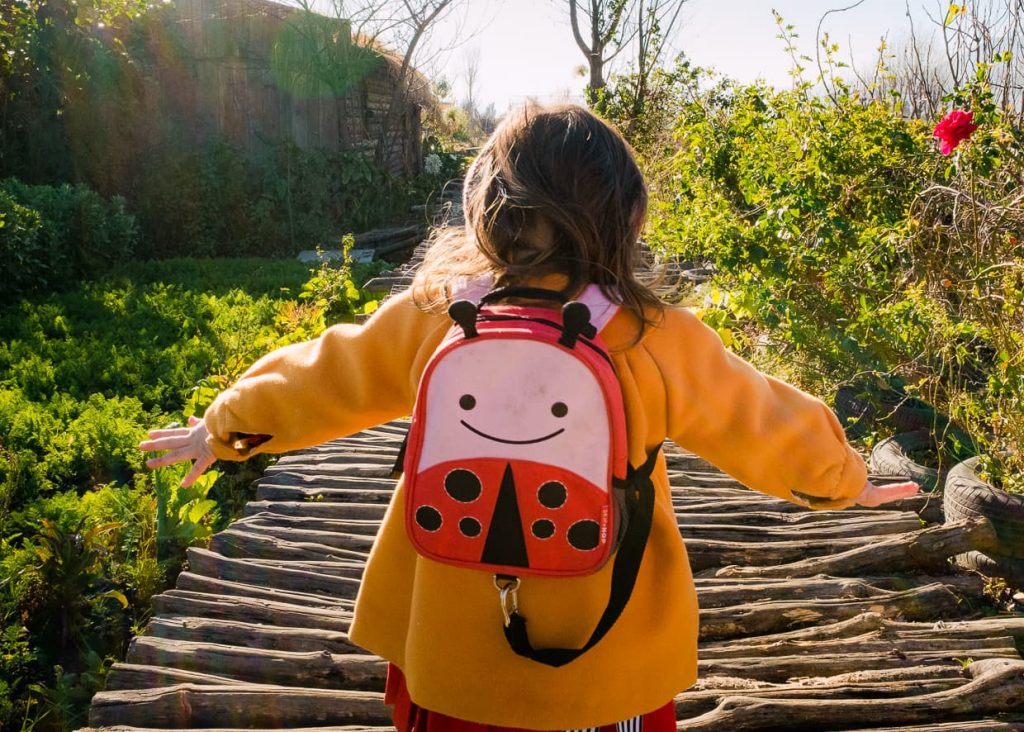
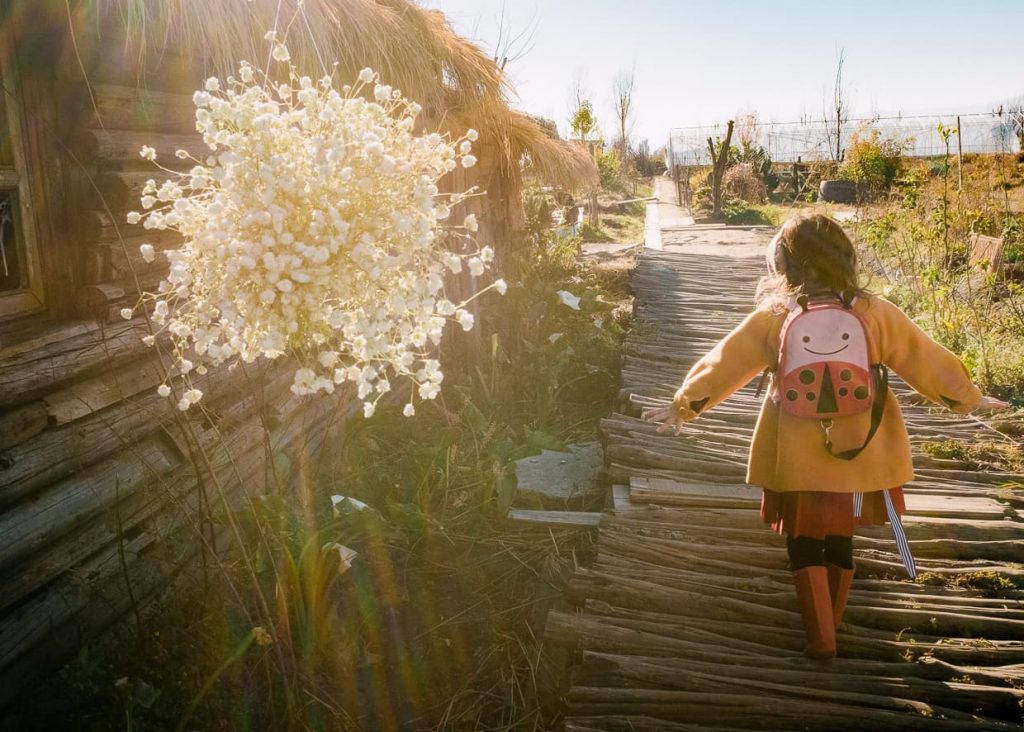
Though we’ve met other American expats in Dali, most of them had traveled elsewhere for Christmas. But one of the benefits of traveling so slowly, especially in a place where you understand the language (or they understand yours) is that you get to know some of the locals as well. Our friend, Li Li was hosting a Christmas brunch on her farm and she had invited Jake, Lisa, and me to join her and some other guests later that morning.

Li Li’s farm house on Christmas Morning in Dali, China. 
Li Li’s farm is one of Lisa’s favorite places, and we knew she was going to have a blast there like she always does. Li Li is also a former restauranteur, and despite the rural setting of the brunch, we knew that we were in for a gourmet Christmas meal.
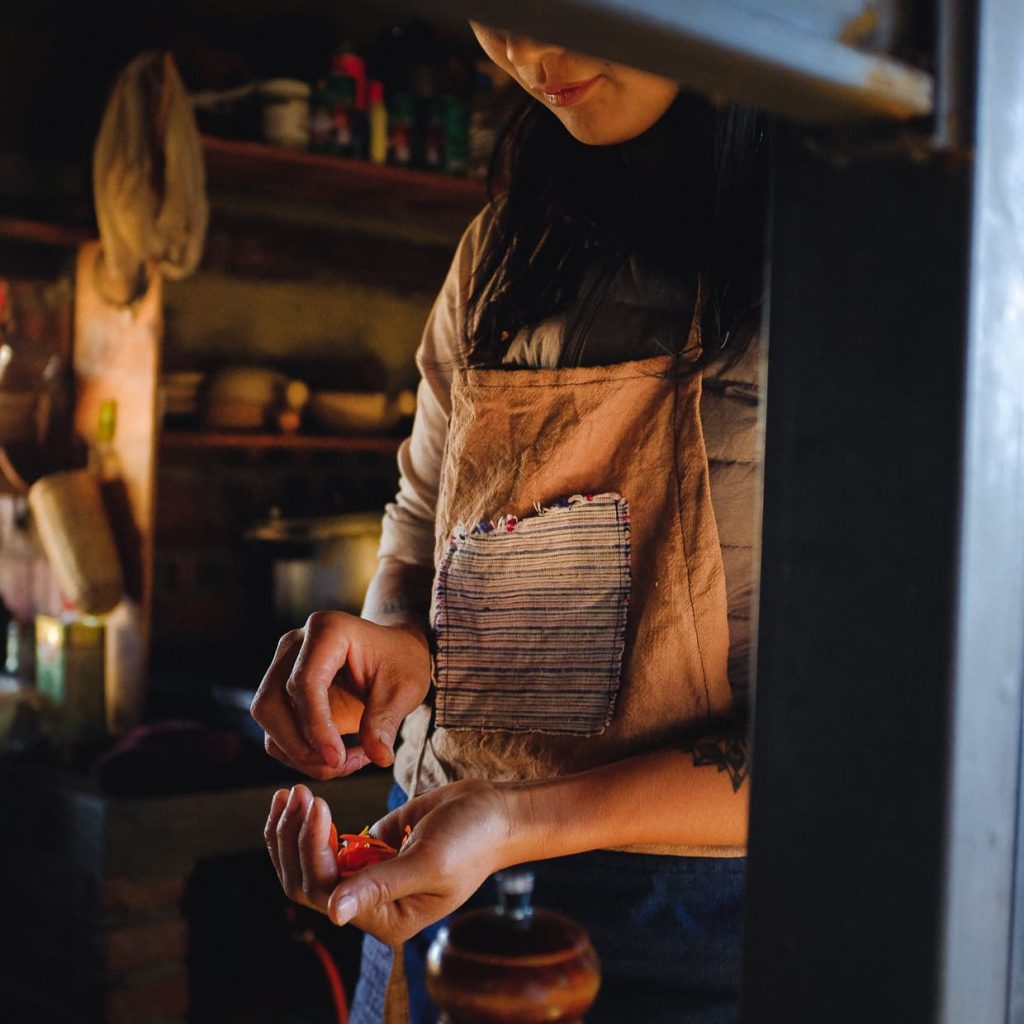

Li Li in the kitchen of her farmhouse, making Christmas brunch.
(We’ve actually mentioned Li Li before. Her farm is where we took the photos for our article about healthy blogging habits, and in the summer we buy as much food from her as we can.)
The dining room and kitchen took up the entire interior of the sole building on Li Li’s farm. From the outside, it looked like a shack, built with tattered boards and old tires holding down the roof. Inside, it was warm and cozy. The decor was plainly rustic, but it was also comfortable, clean, and cozy. Our family filled the final bench around a single square table with five other guests.
The table was almost more of a bar though. In the center was a fire pit that warmed a kettle of coffee (to Jake’s delight) and a pot of chai tea that Li Li had picked up on her recent trip to India. I should have mentioned that though Li Li runs a small farm in Dali, she once lived in Beijing, and she travels. There are a lot of things we don’t know about her, but we know that she’s a joy to be around, and exactly the kind of person who is drawn to a place like Dali.
In the kitchen, Li Li and two other cooks were preparing the food, while Jake and I chatted with the other guests. Two of them were young women who mostly talked to each other, but the other three were from Beijing. They were friends on a holiday trip, and one of them was actually an American who was working in China. We never asked what he did, but we all traded travel stories around China and Beyond, he told us their next stop was to go hiking near the border of Myanmar, and about how easy it was to visit Mongolia by train from Beijing (maybe this summer?!).
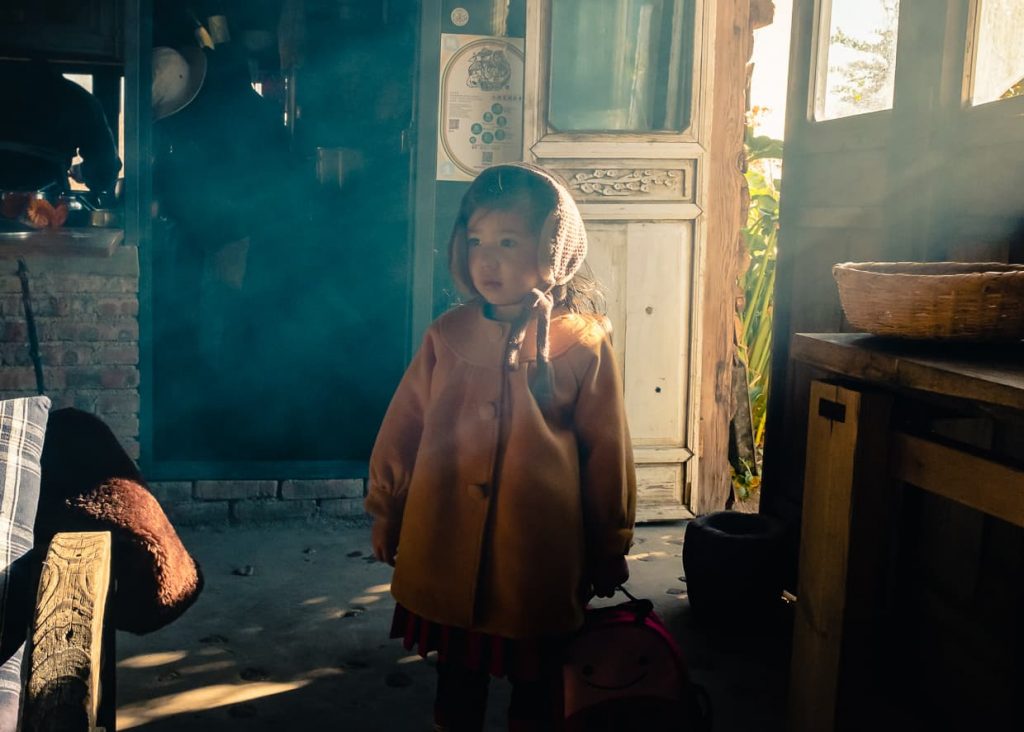
Of course, from the moment we entered the smoke filled room, Lisa was the real center of attention. There’s really no avoiding this. She was happy to show off for a while, but eventually the draw of the animals outside was too much for her, and everyone took turns walking outside with her, first while the food was cooking, and then later when everyone was eating.
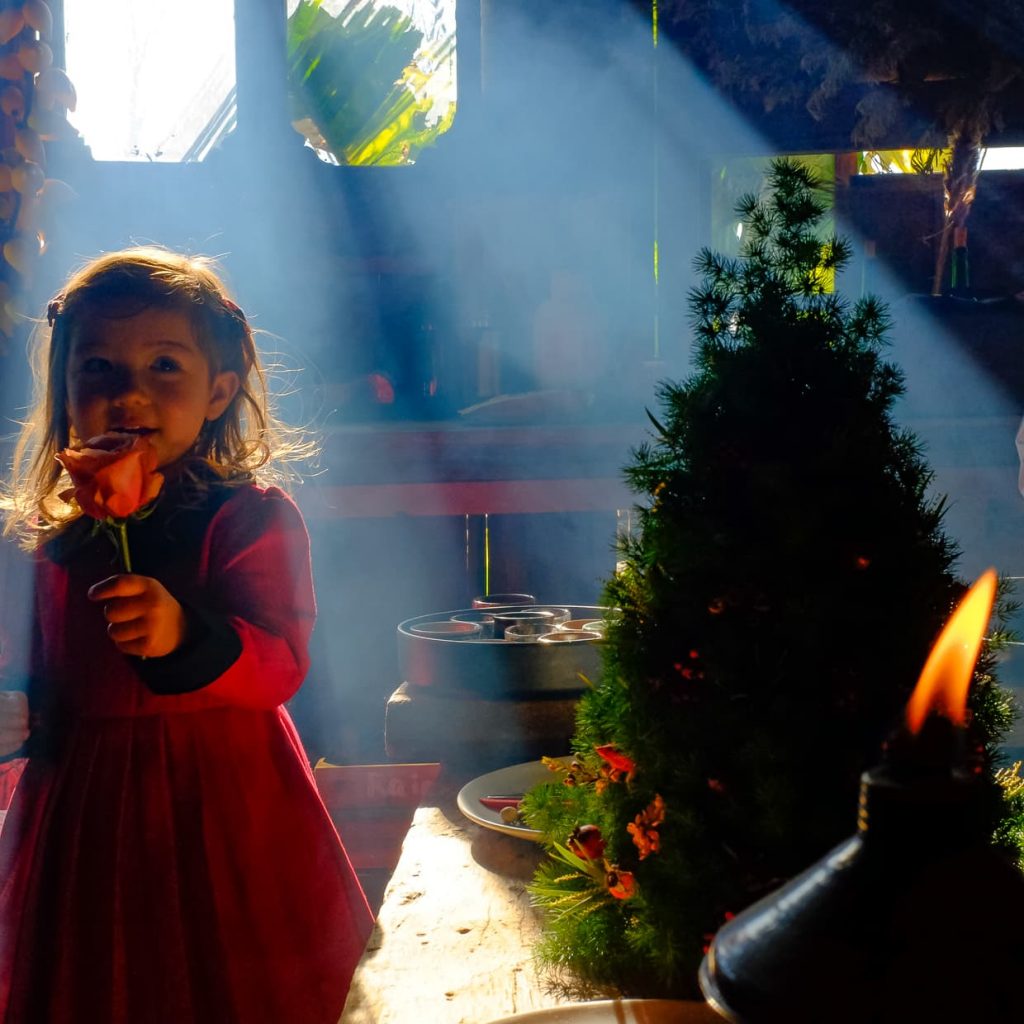
The first course was a sweet pumpkin soup. It’s a popular dish, available in a lot of restaurants, but of course, this one was exceptional. The pumpkin was freshly picked right outside the kitchen, the clay bowl was piping hot, and everyone ate it slowly and savored it on the cold morning.
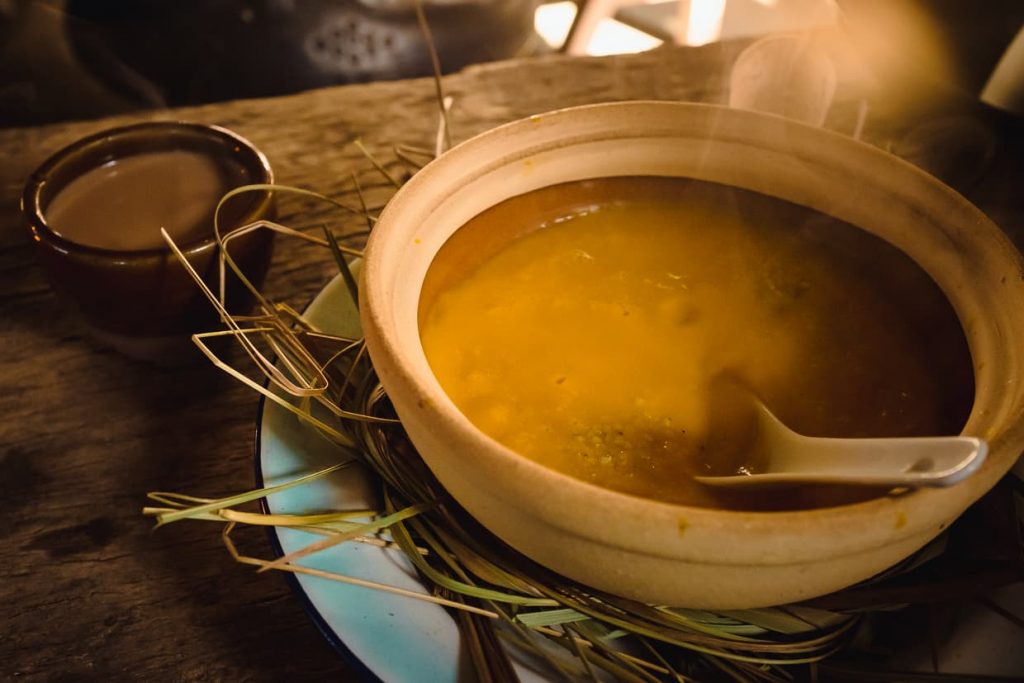
The main course was eggs Benedict, served with salad and sausage on fresh baked bread. The sausage was left out on our plates to make it vegetarian. Most Americans would probably think the salad was the least exciting part of the meal, but eating raw vegetables is just not a thing in China, and it felt like a rare treat in this setting. Just to note, other than organic veggie’s from Li Li’s farm we don’t usually eat raw vegetables in China, we have heard scary stories of westerners who ordered salad in restaurants, that’s another post, another story.
And finally, for desert we were served crepes with strawberry sauce and bananas. Lisa was too excited about the animals to eat most of the meal, but she managed to stay in one spot for the crepe.
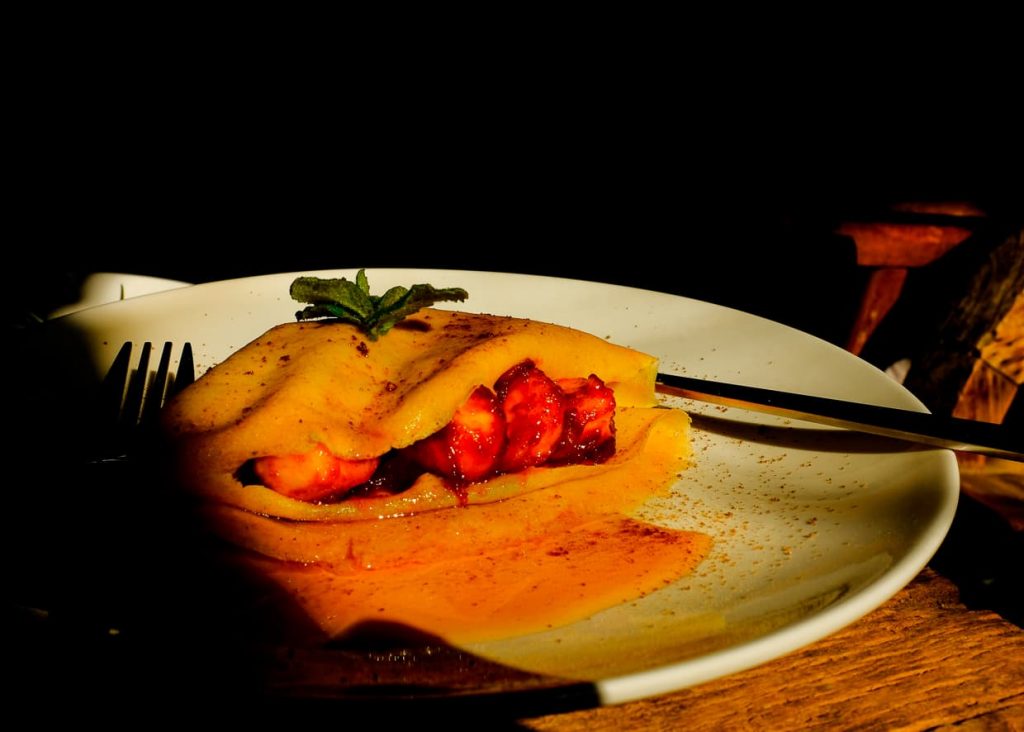
After dinner, some of the guests left, but we stayed a little longer to talk with Li Li and give Lisa a chance to feed the animals. Every year since Lisa was born, Christmas has been a different experience, but at least this year we didn’t feel alone.
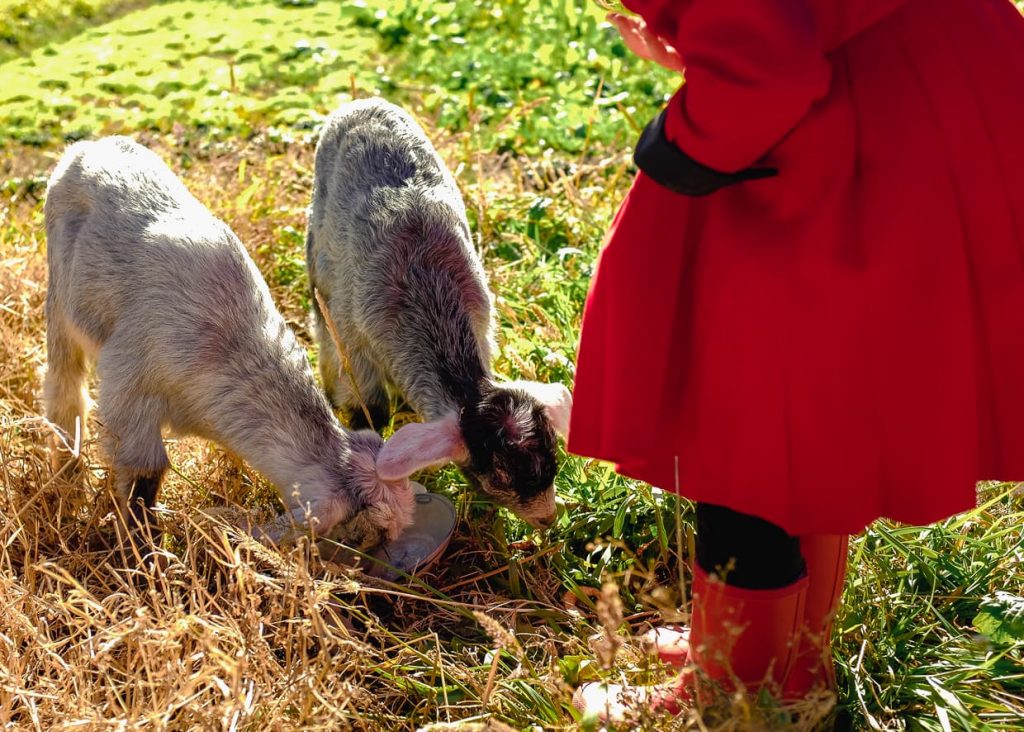
It’s hard to know right now what next year will bring. We probably won’t be in Huamei’s house anymore, for better or worse, but some visions of the future are starting to come into focus. “Home for the holidays” might never mean the same thing for Lisa as it does for most children - in fact, if we went “home,” she would find Florida completely unfamiliar - but at least she’ll bring with her a few things, real or intangible, that will make Christmas more than just another winter day.
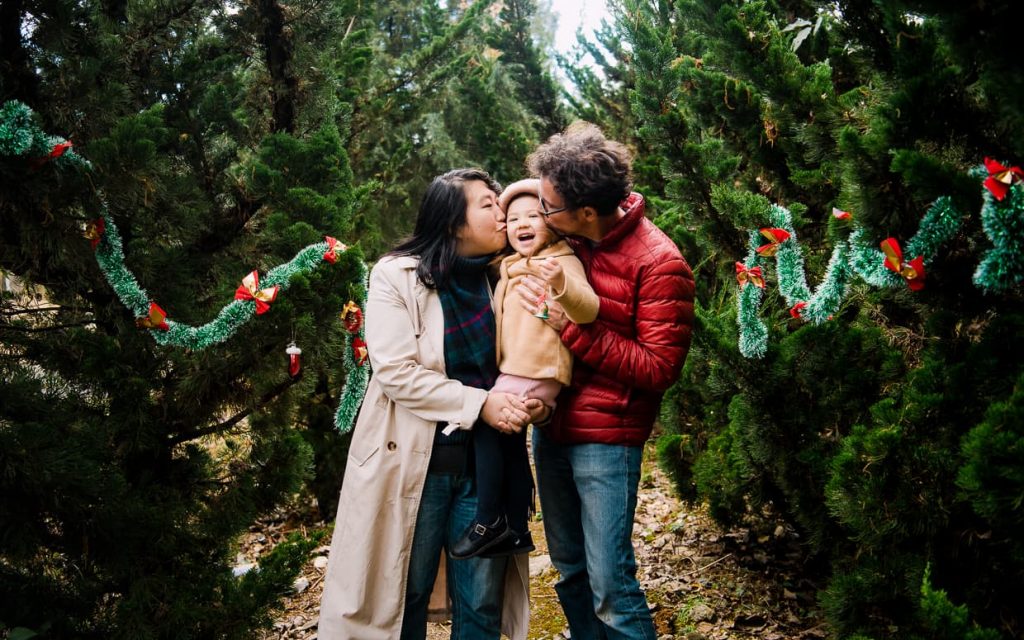

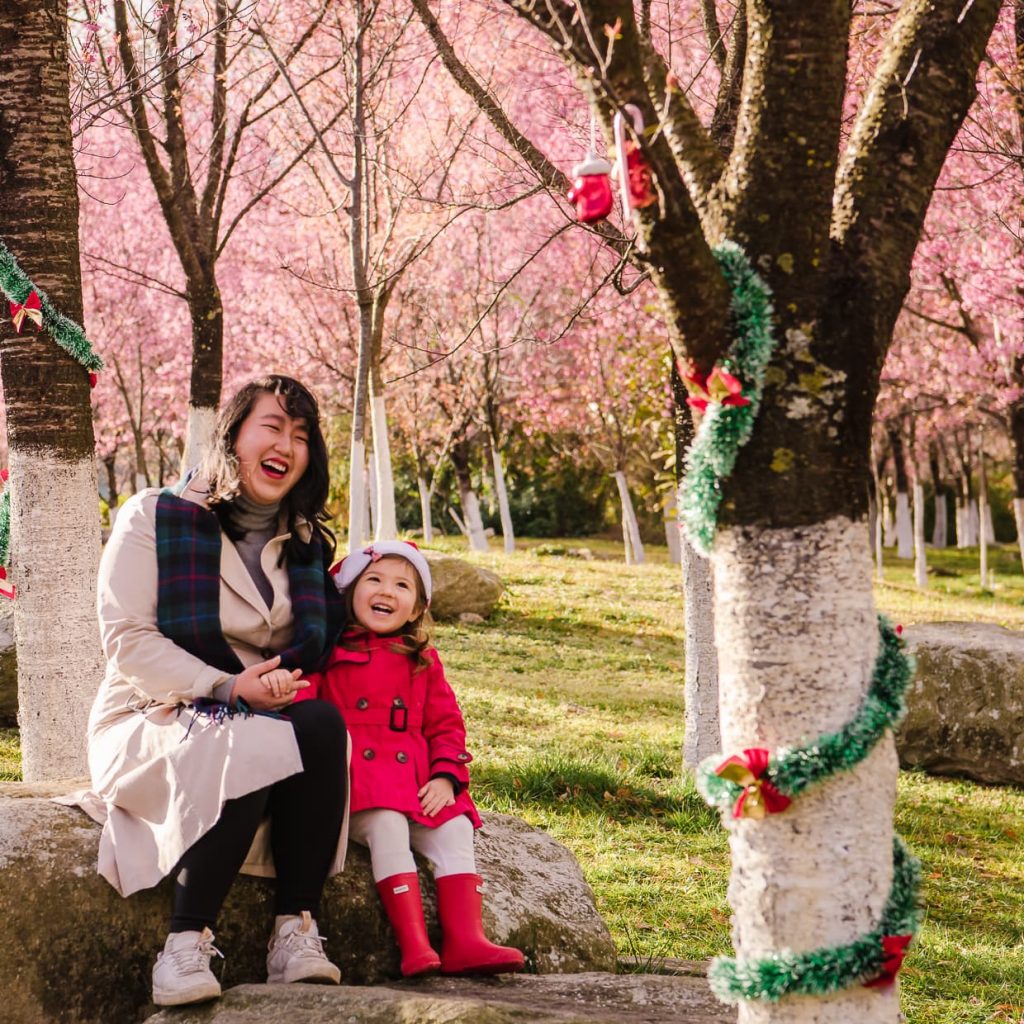


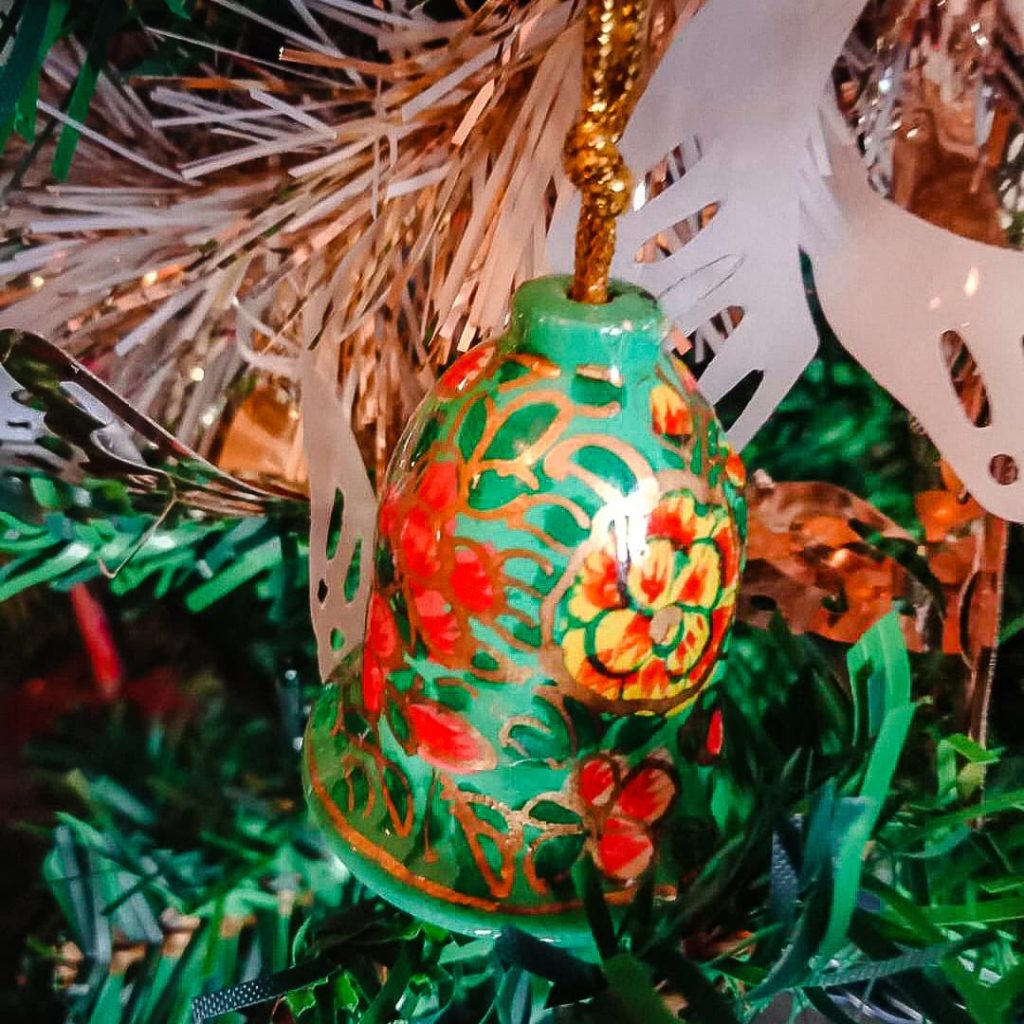

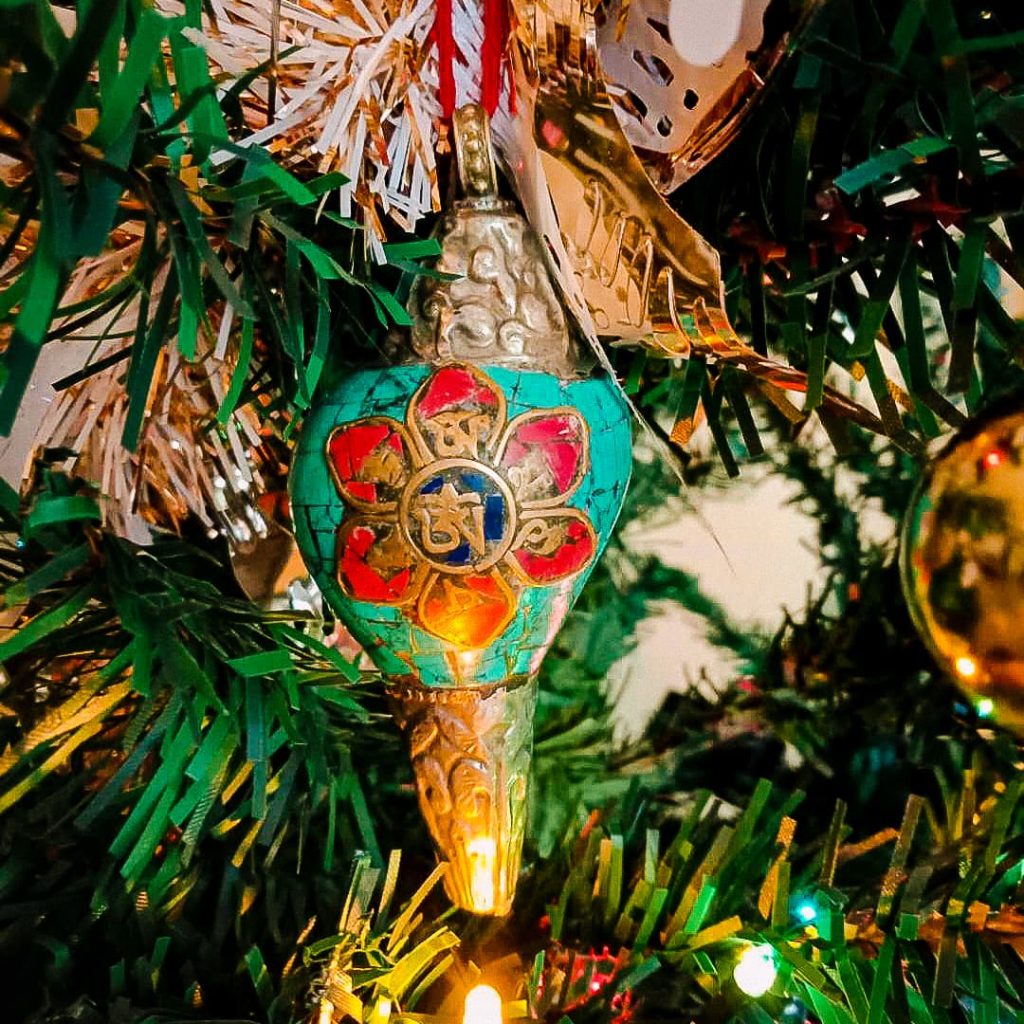
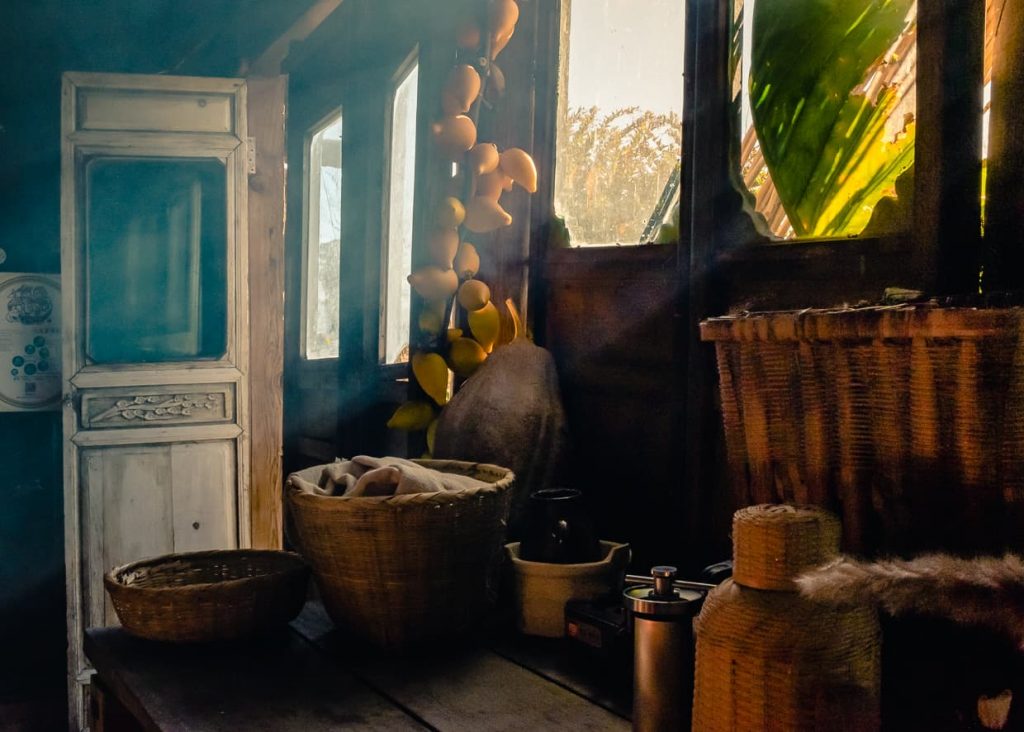
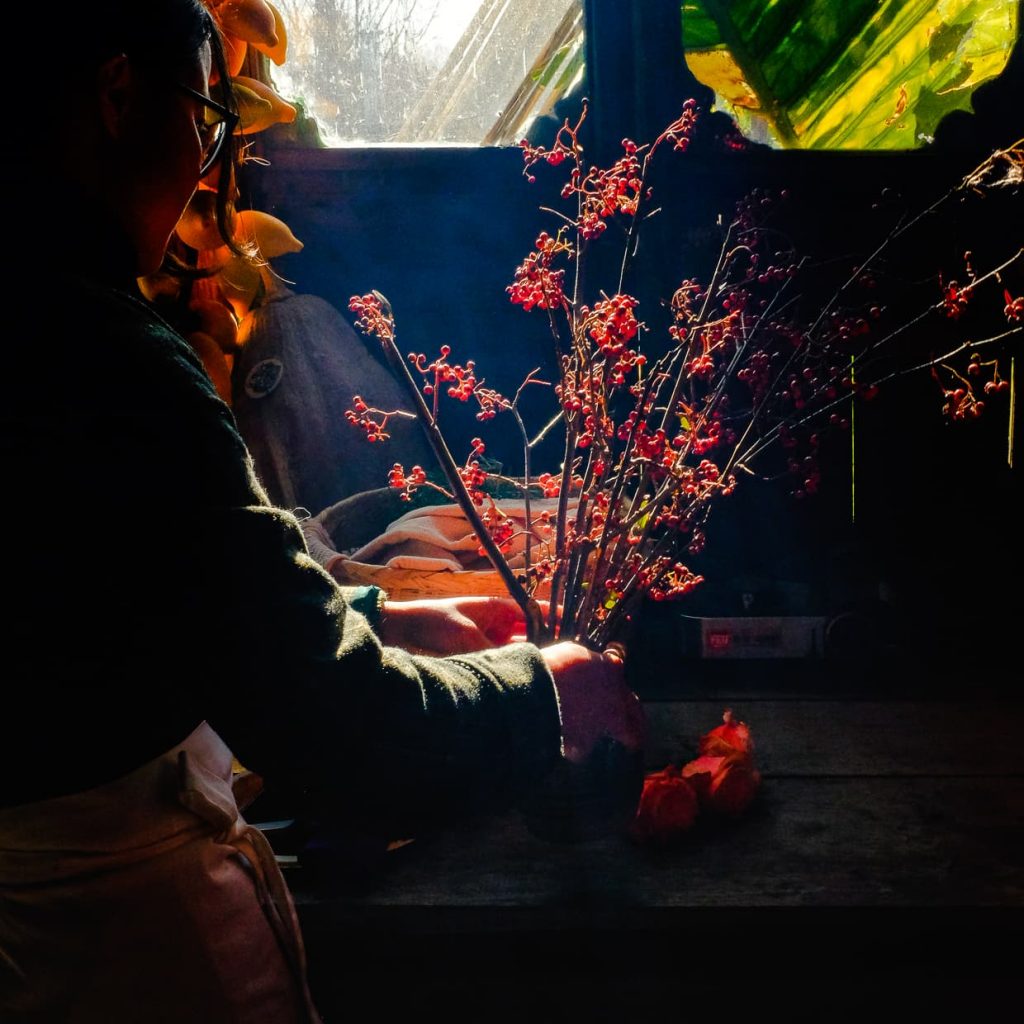
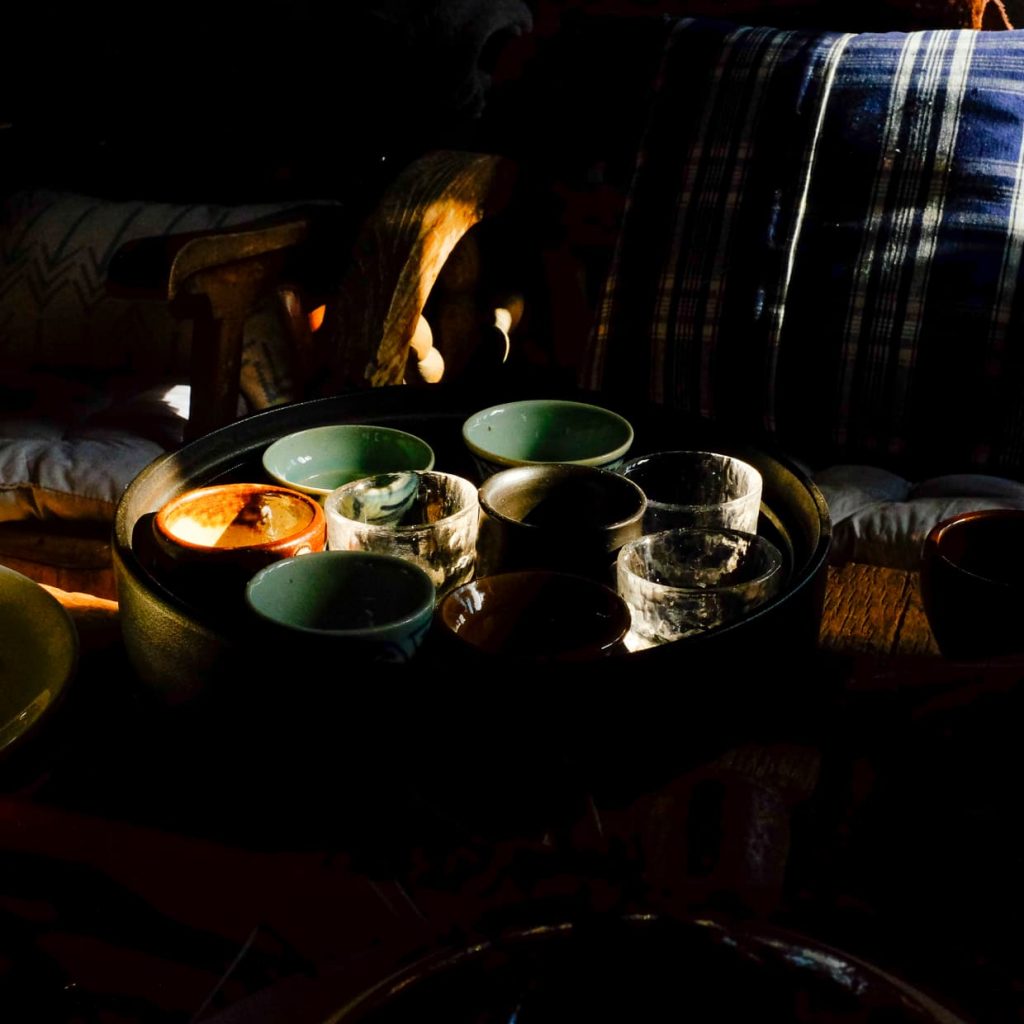

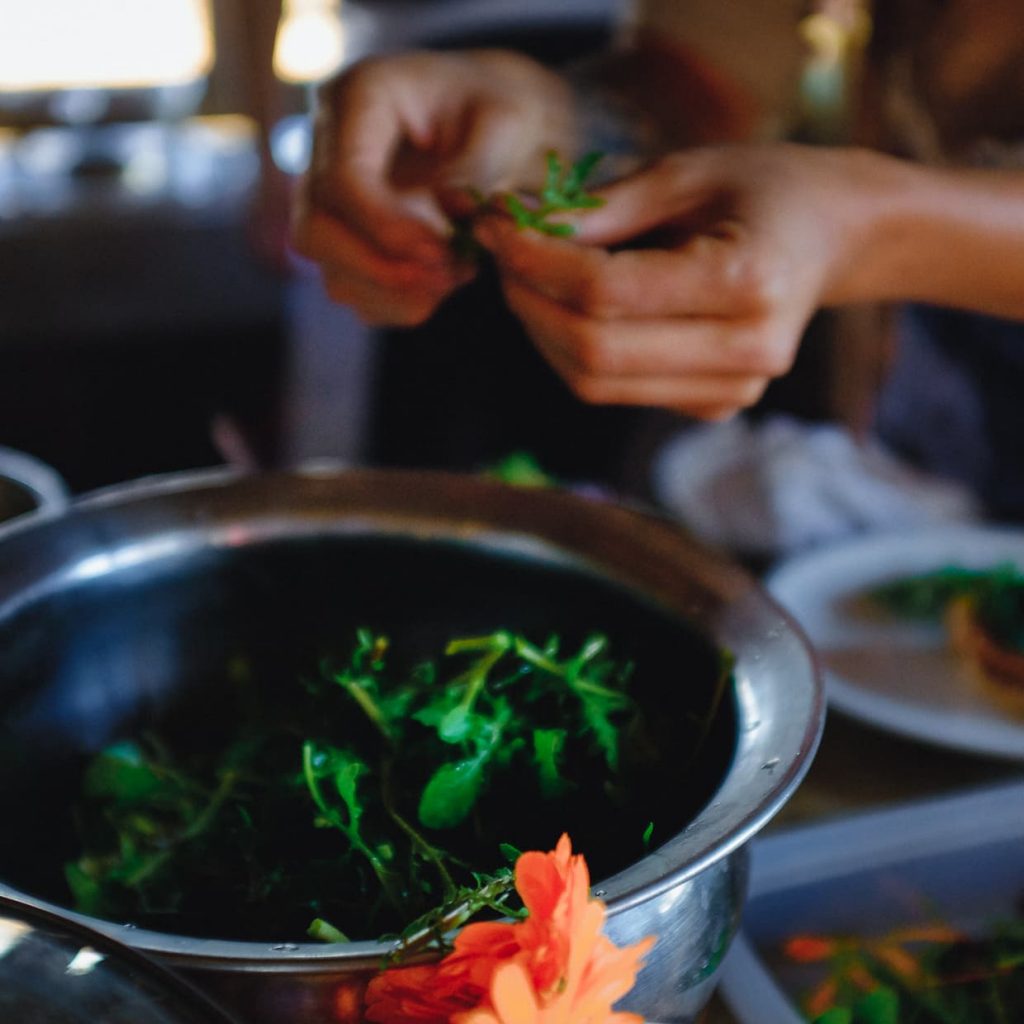
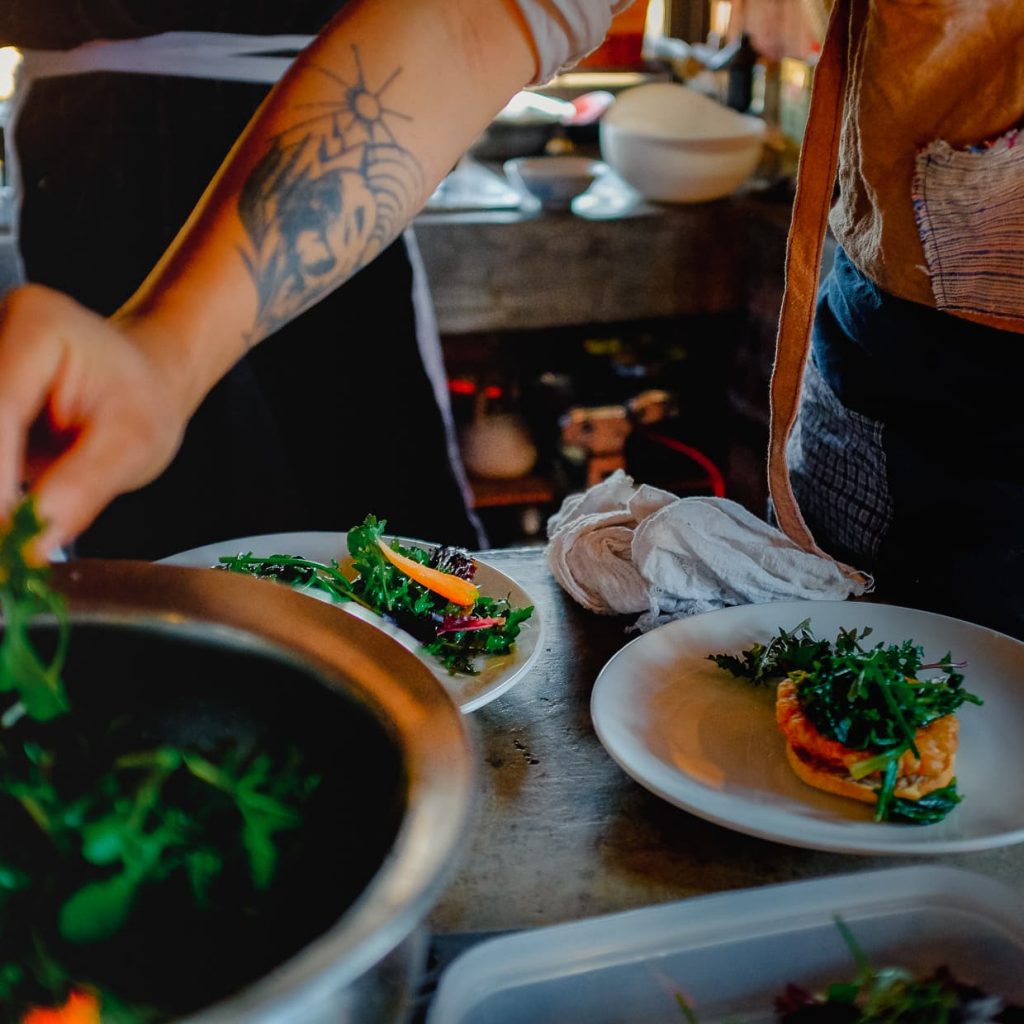

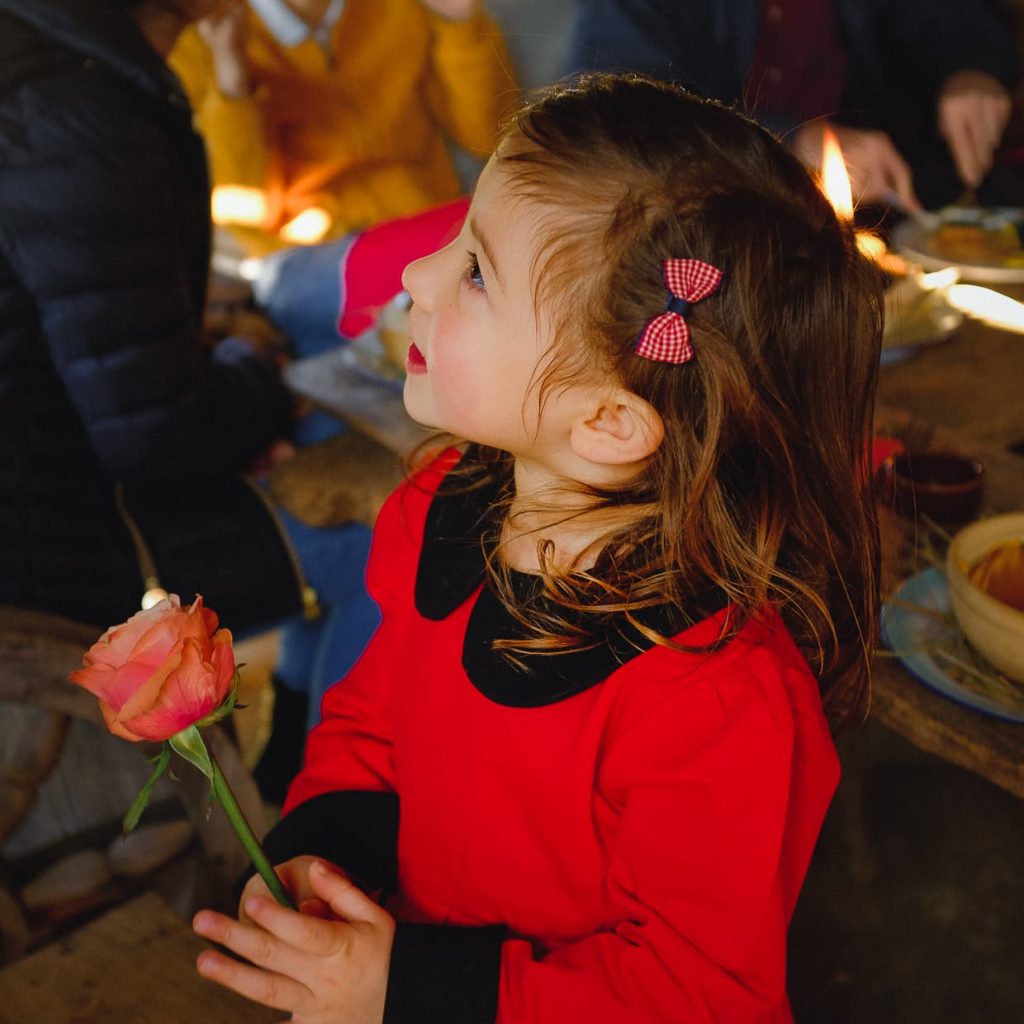
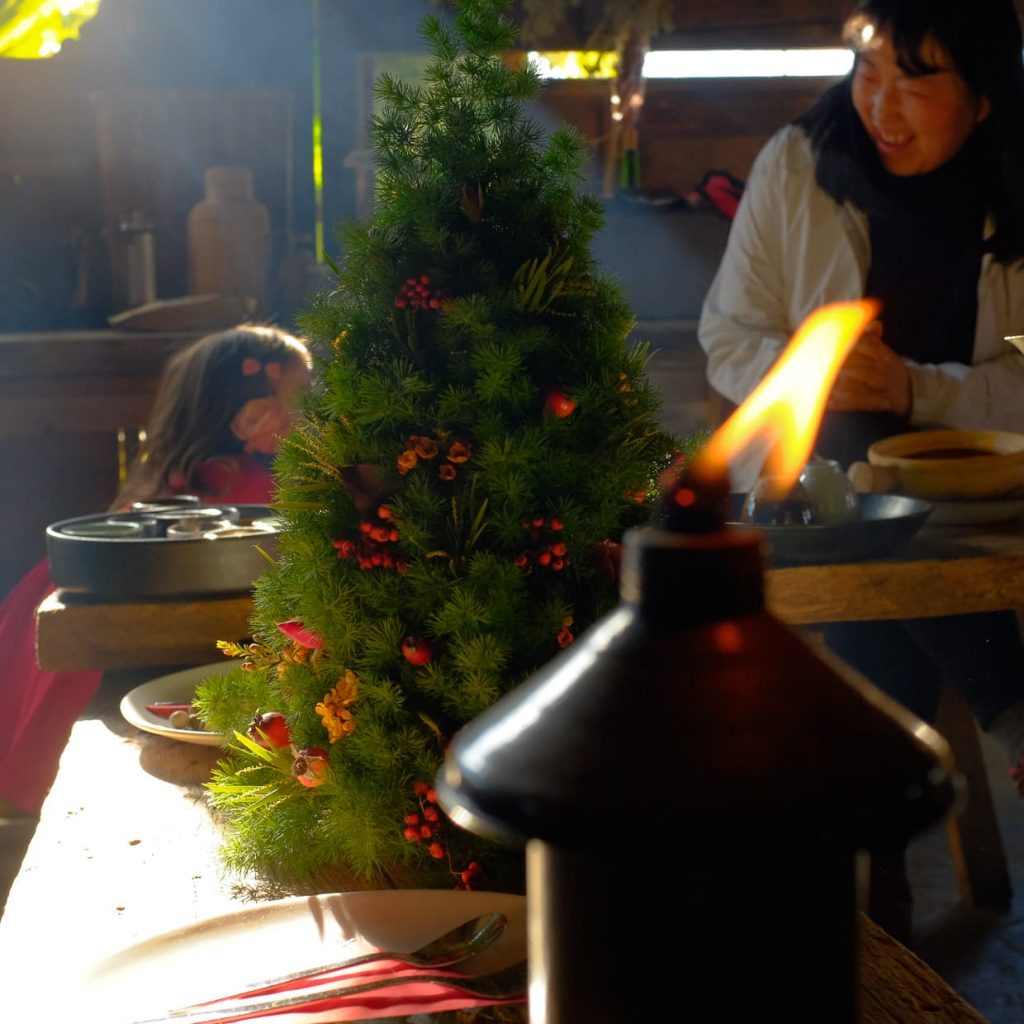
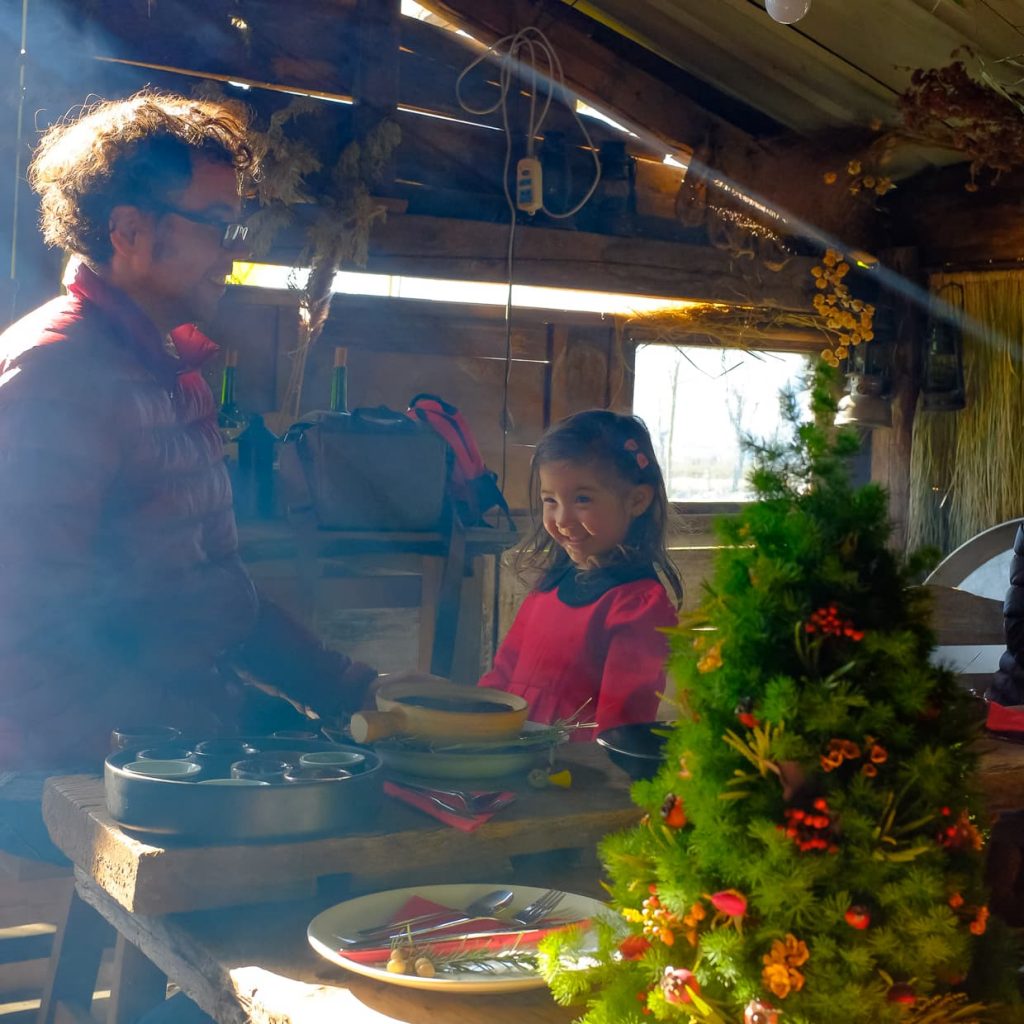
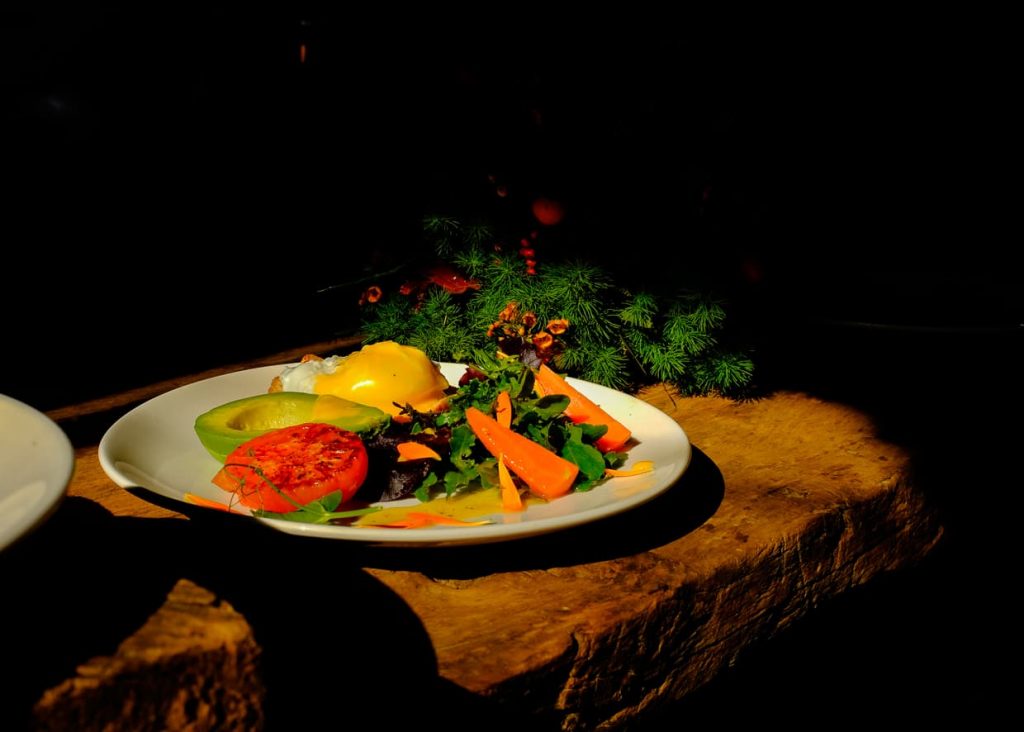
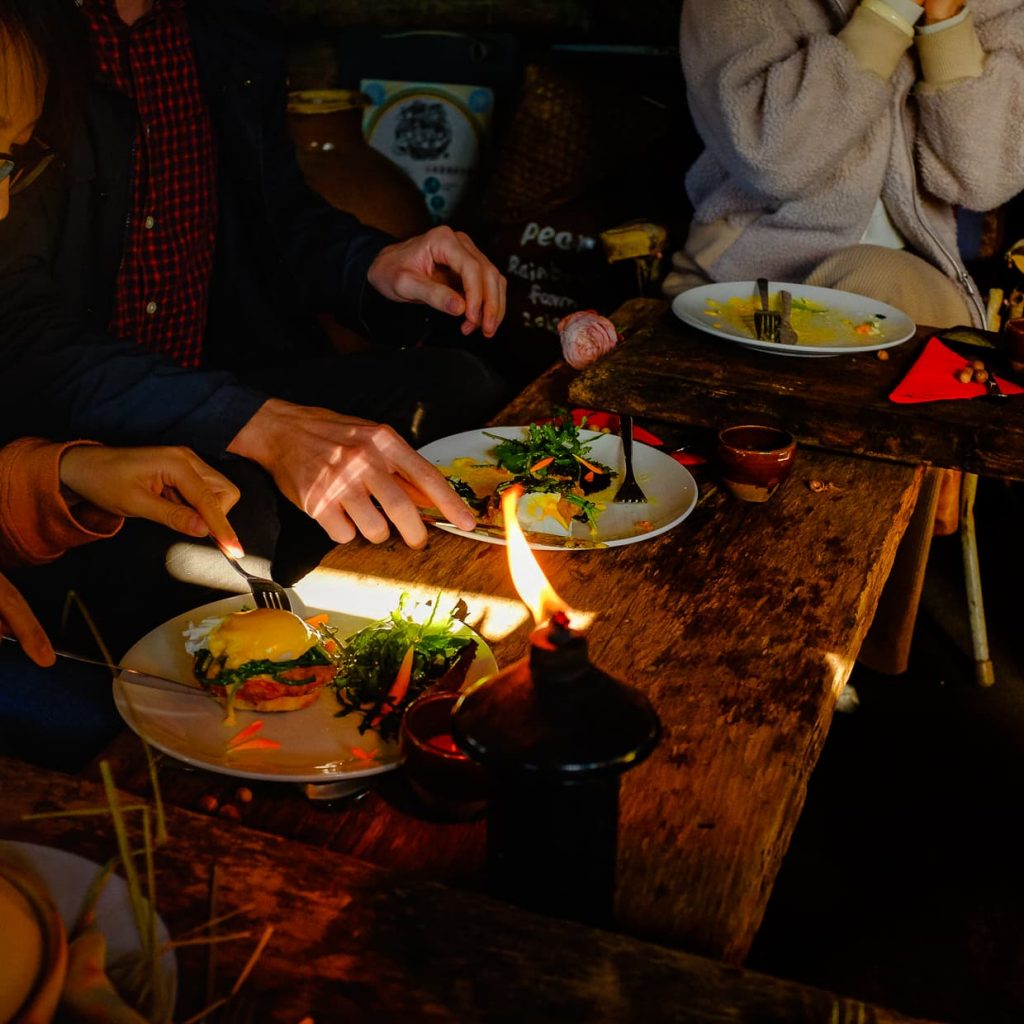
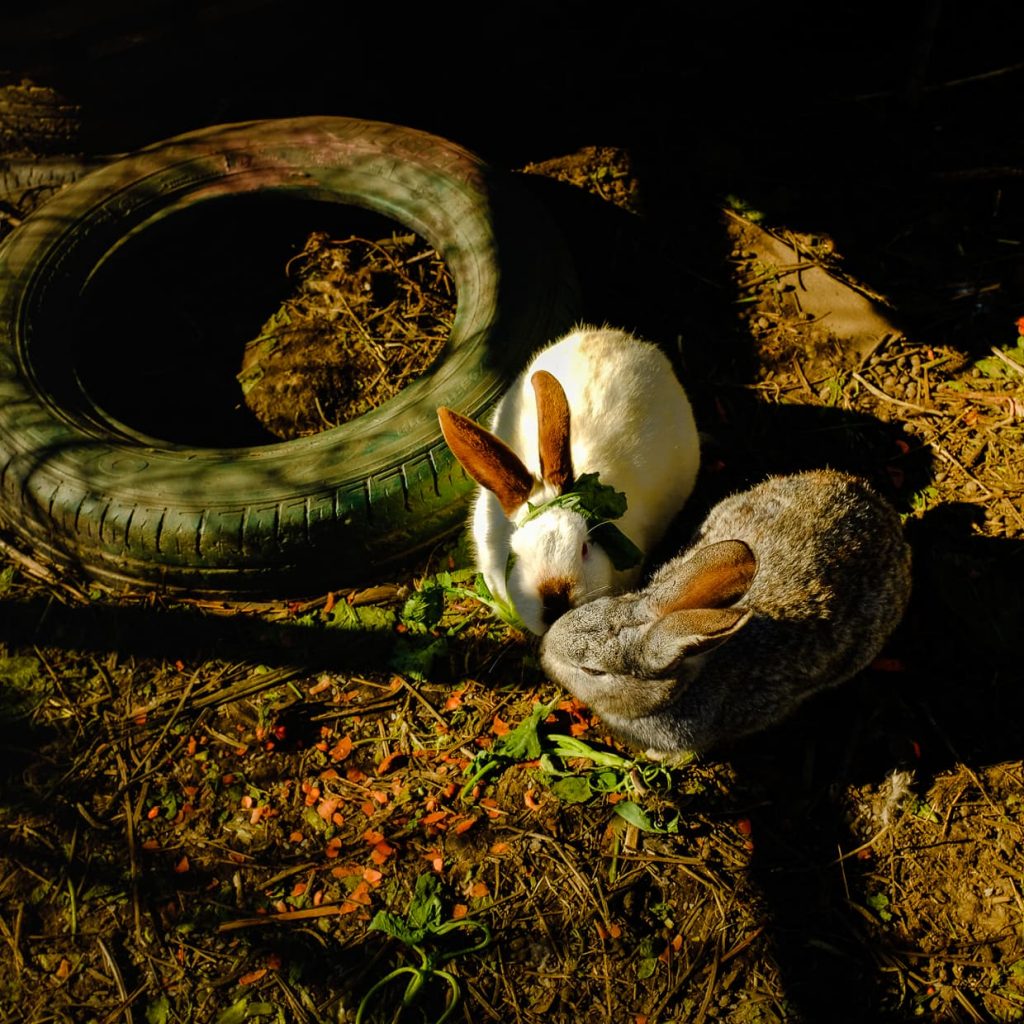
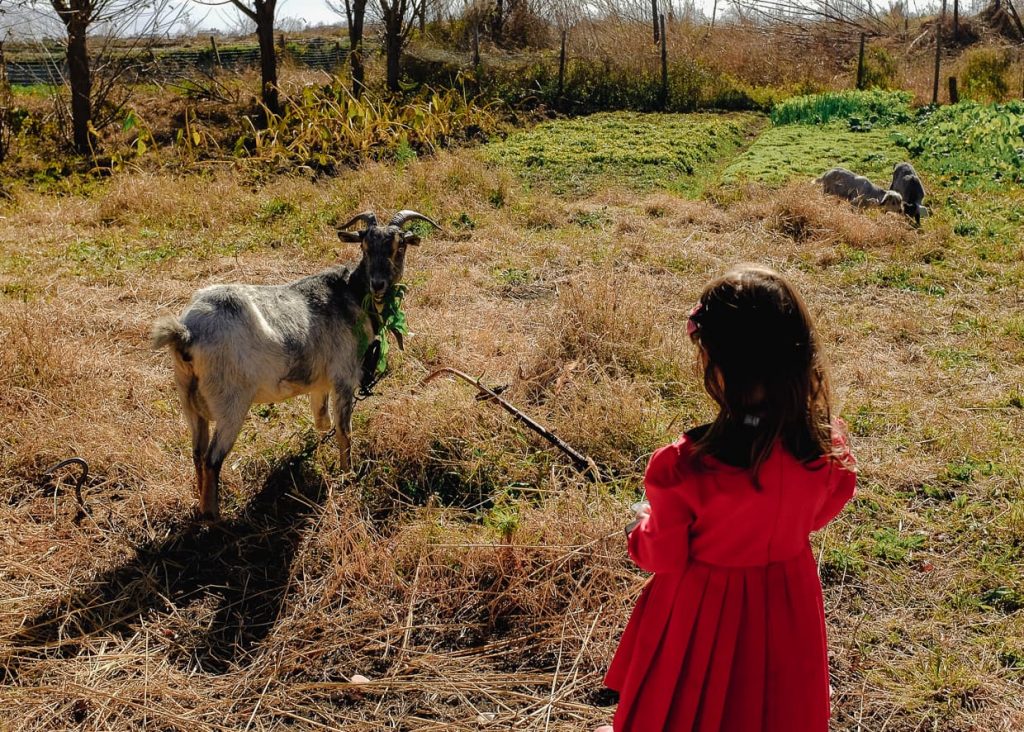



Leave a Reply